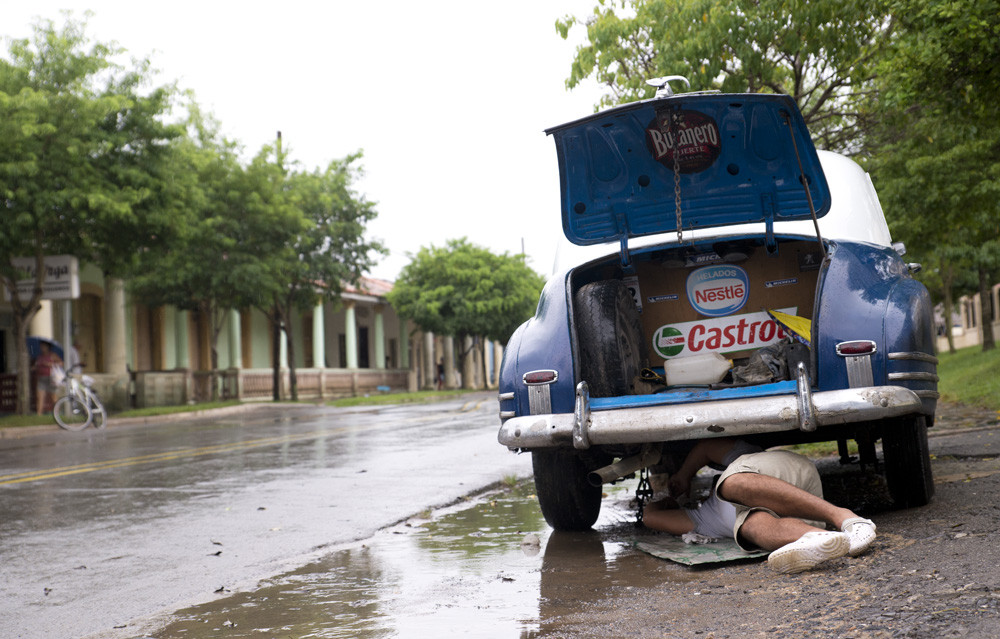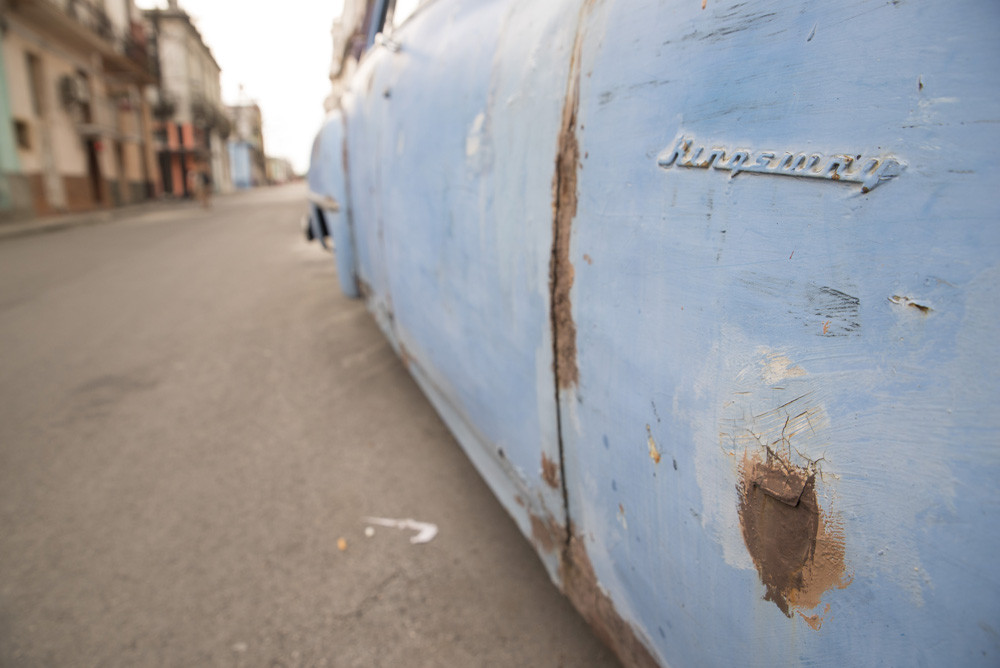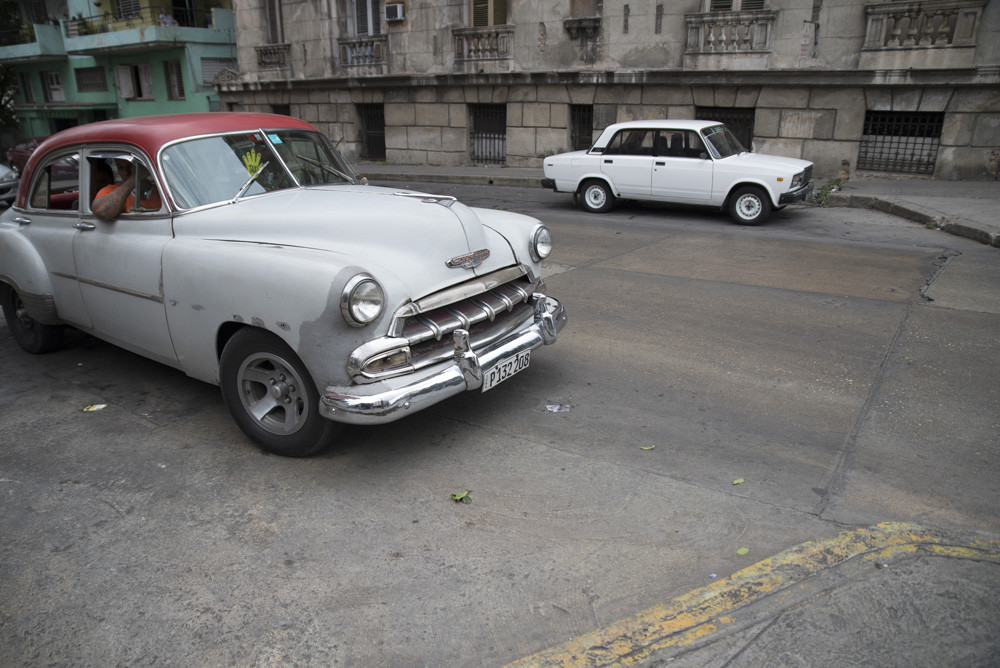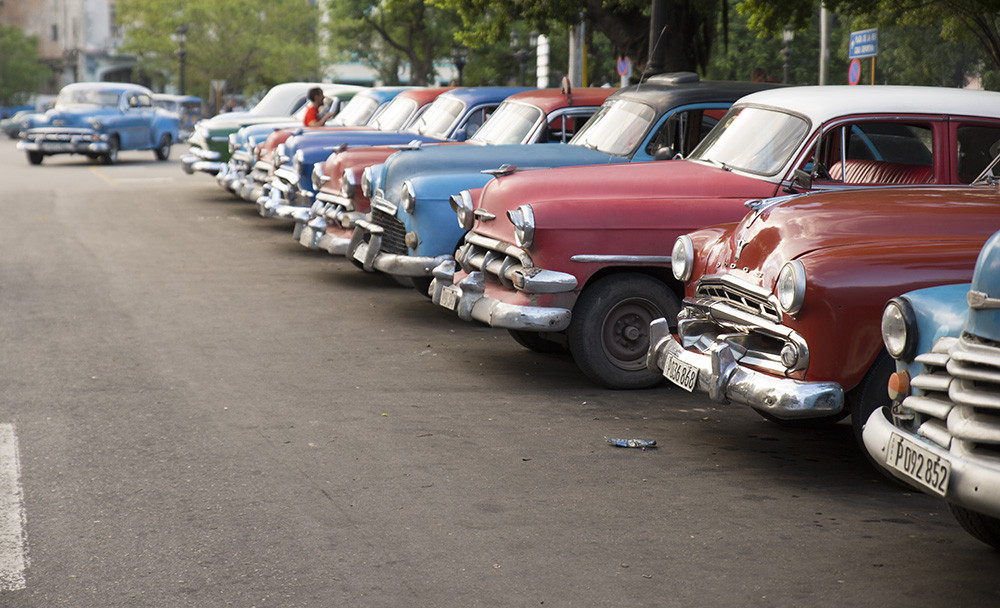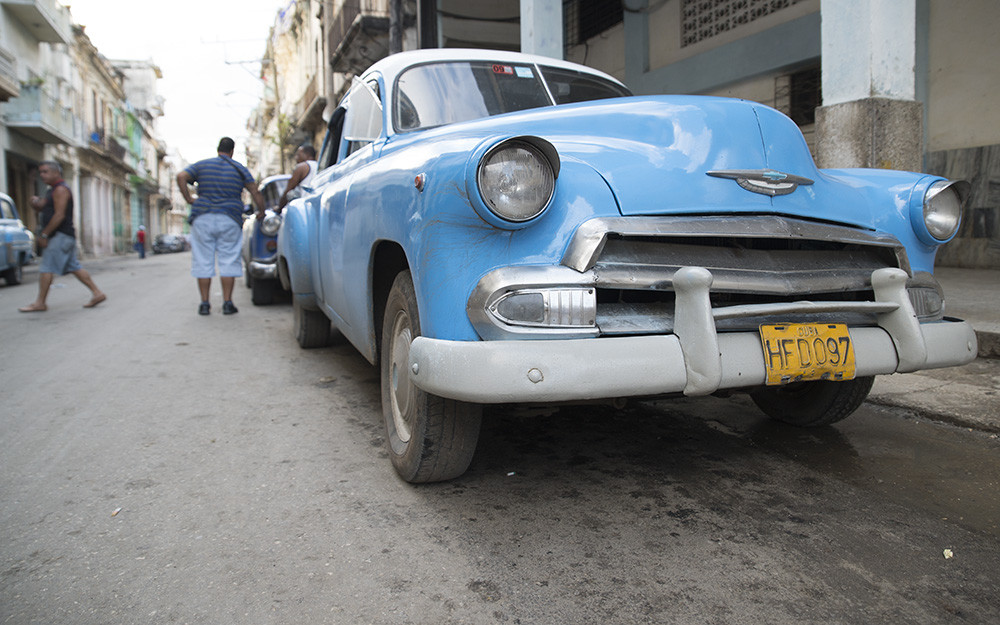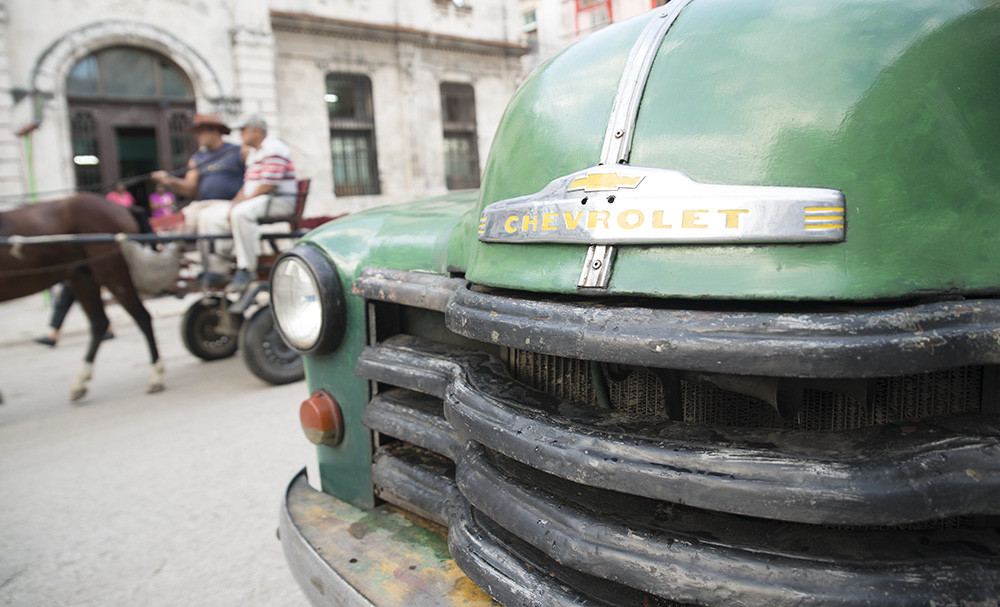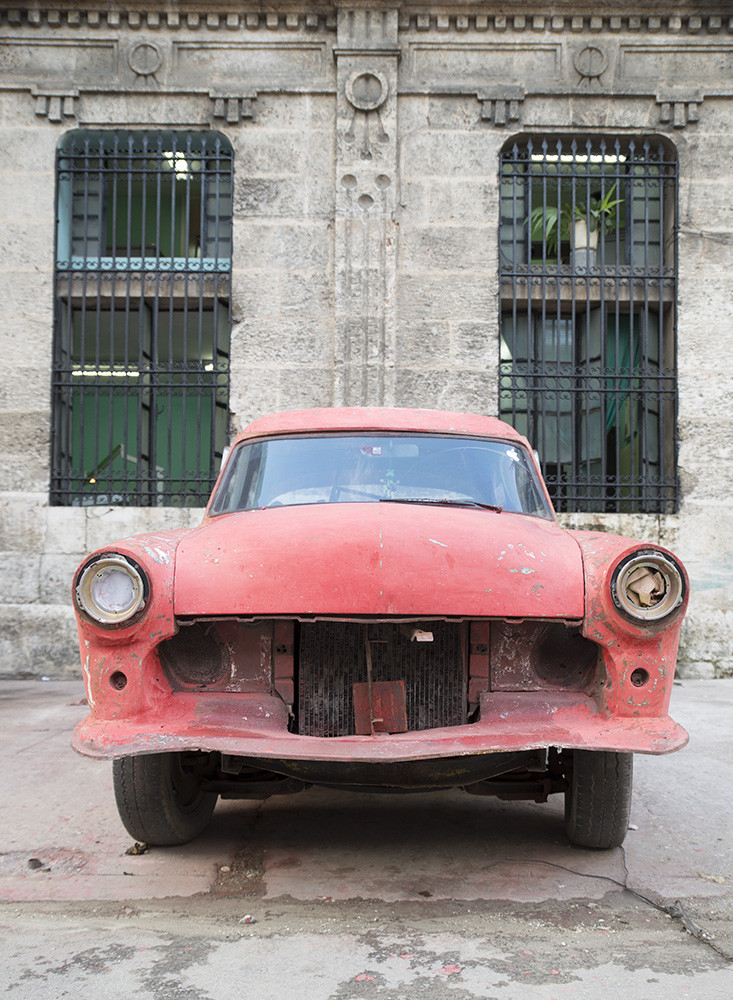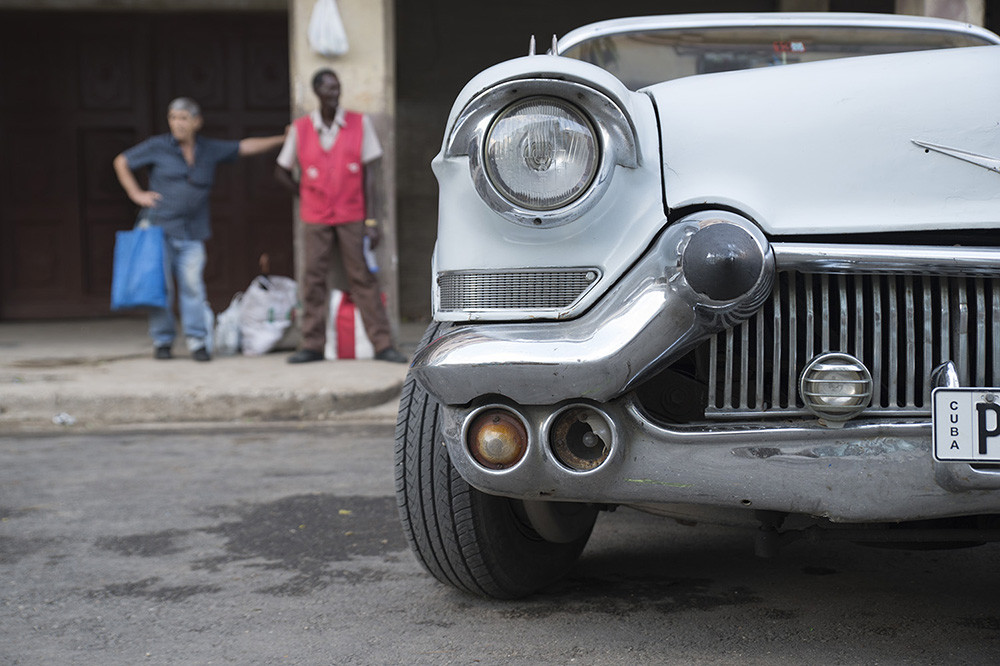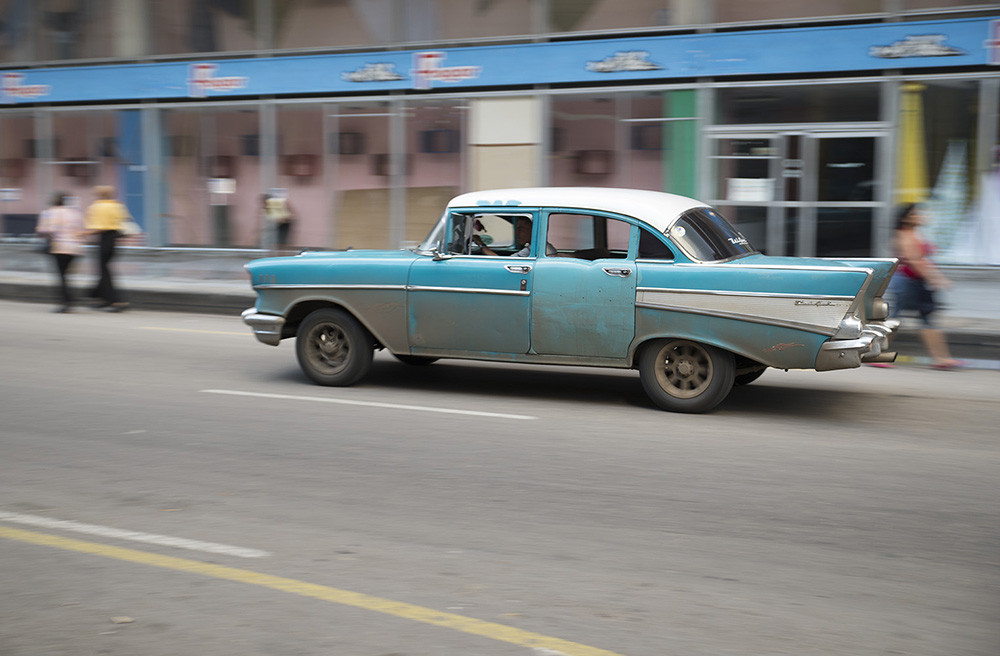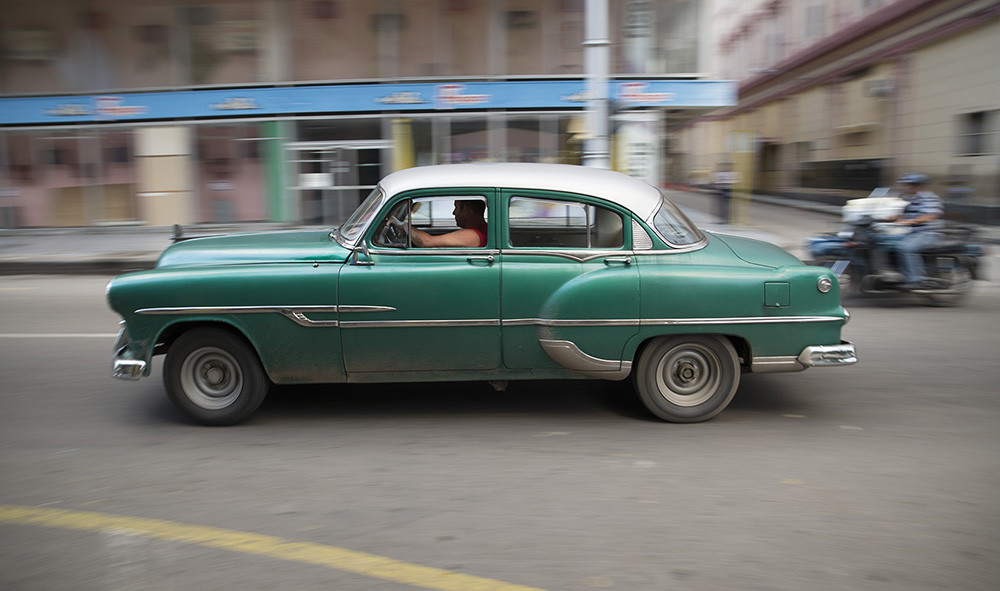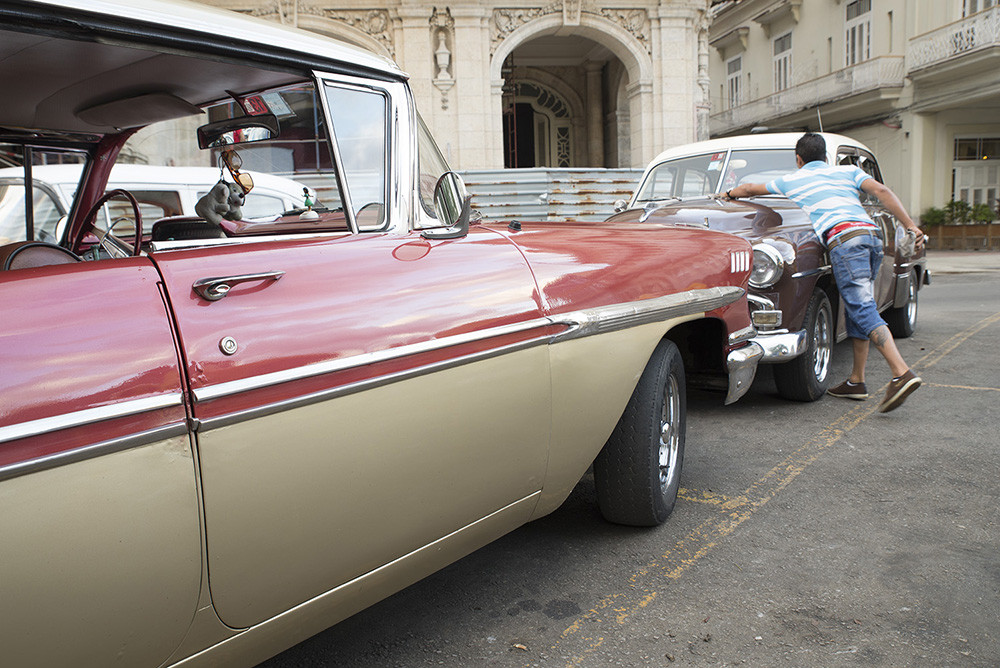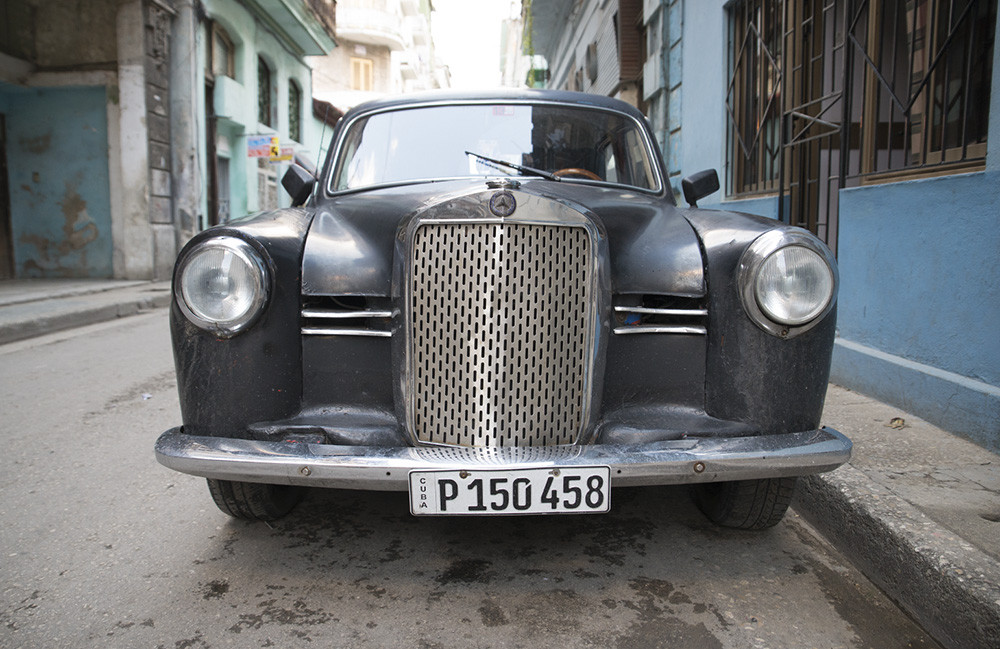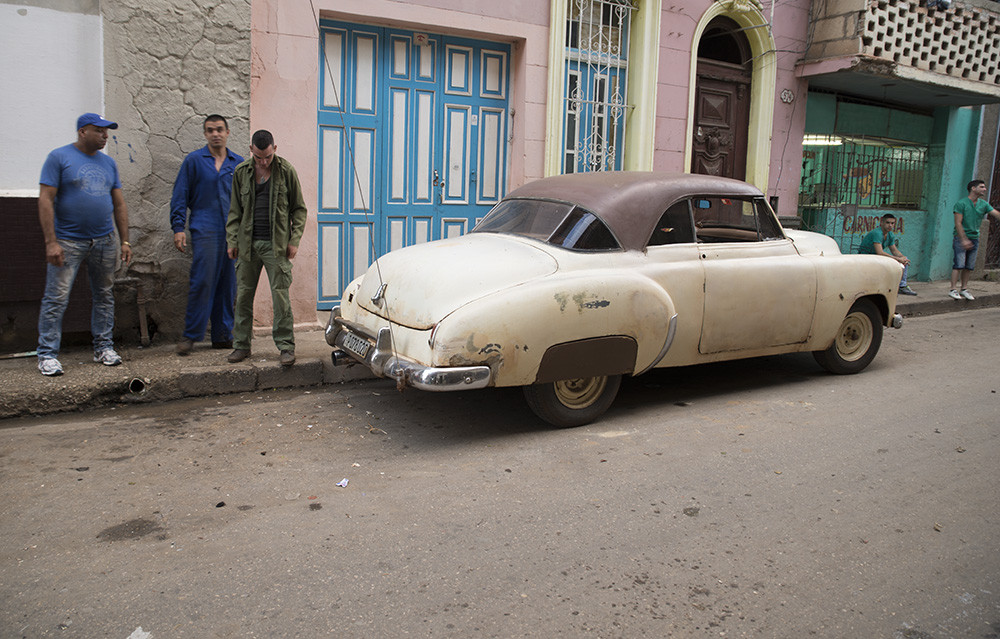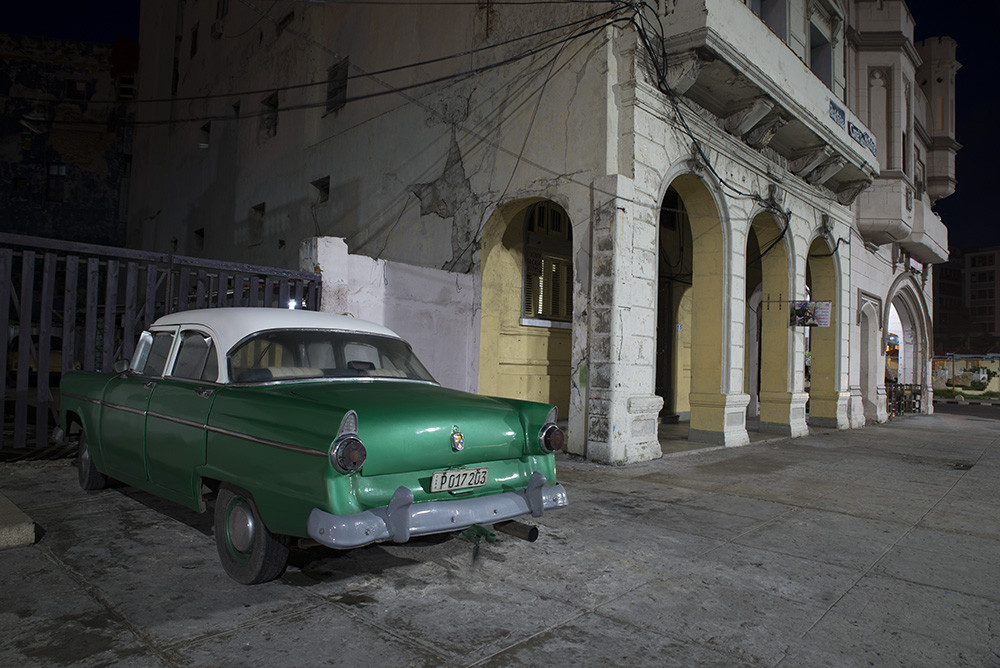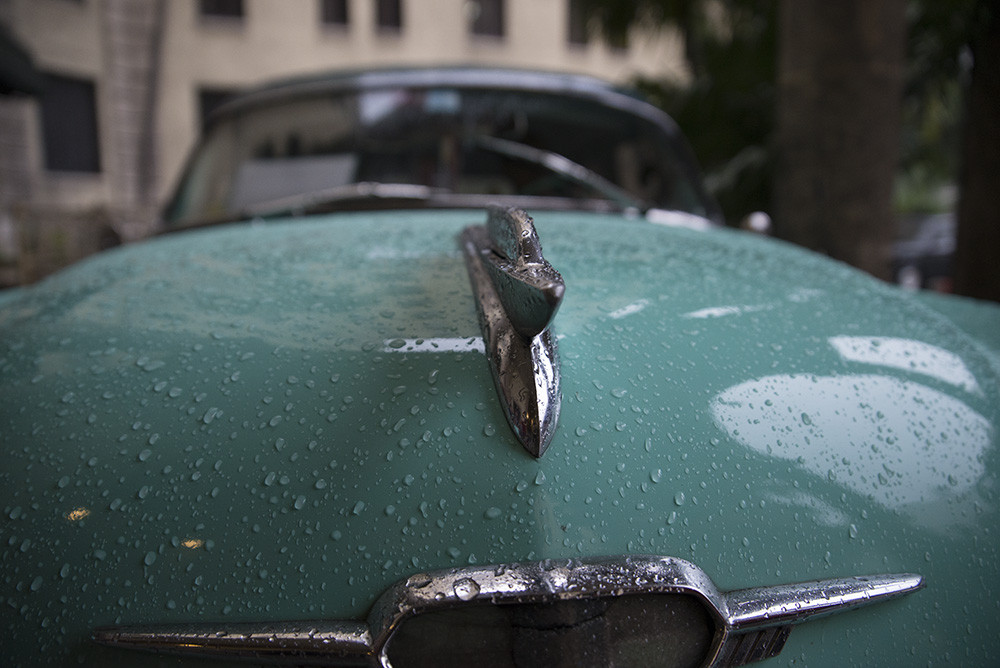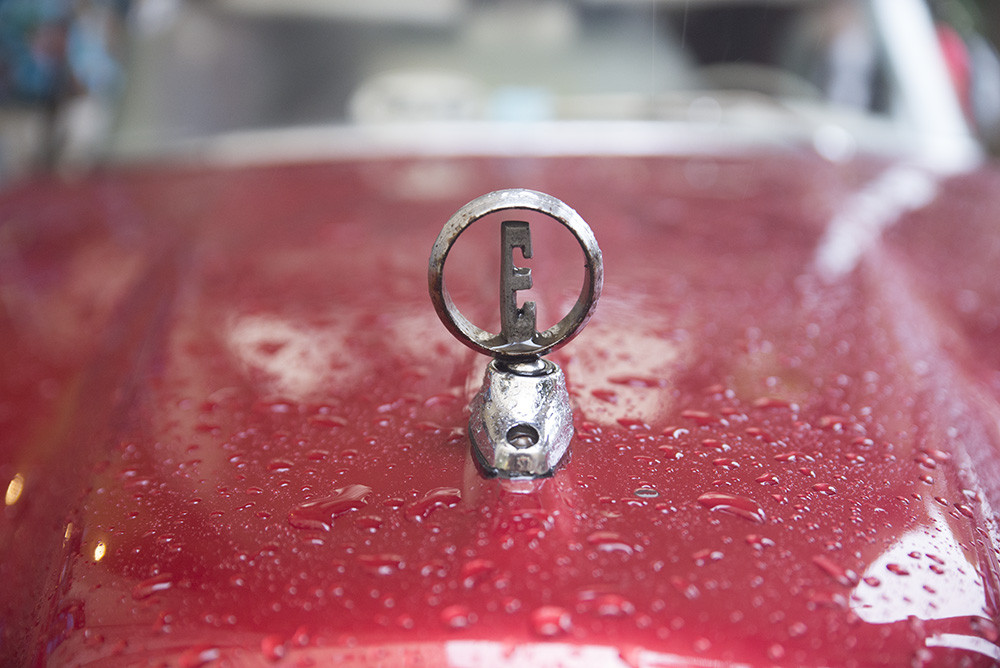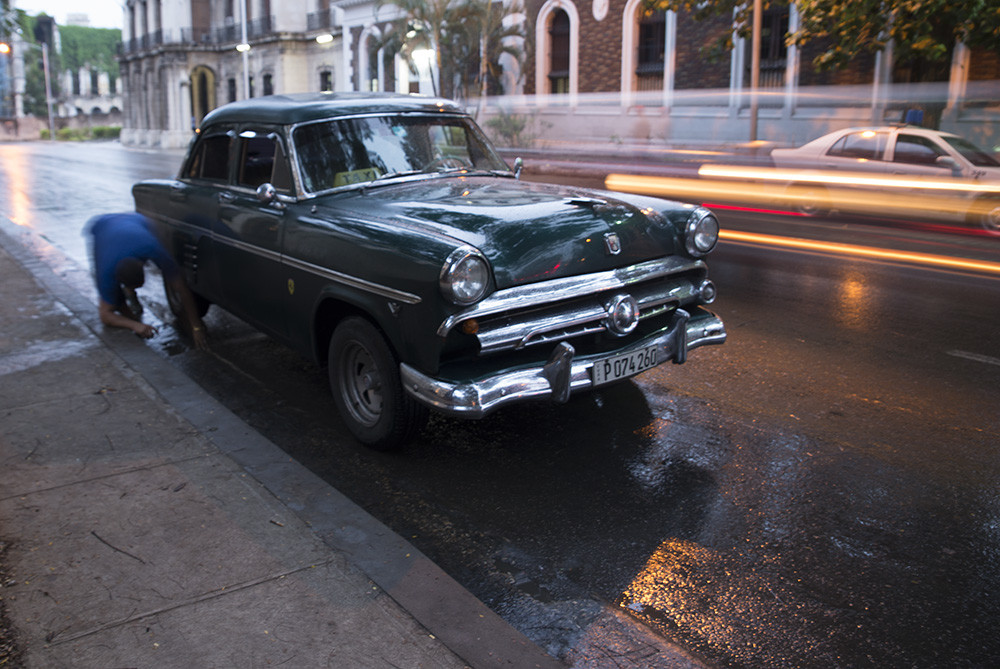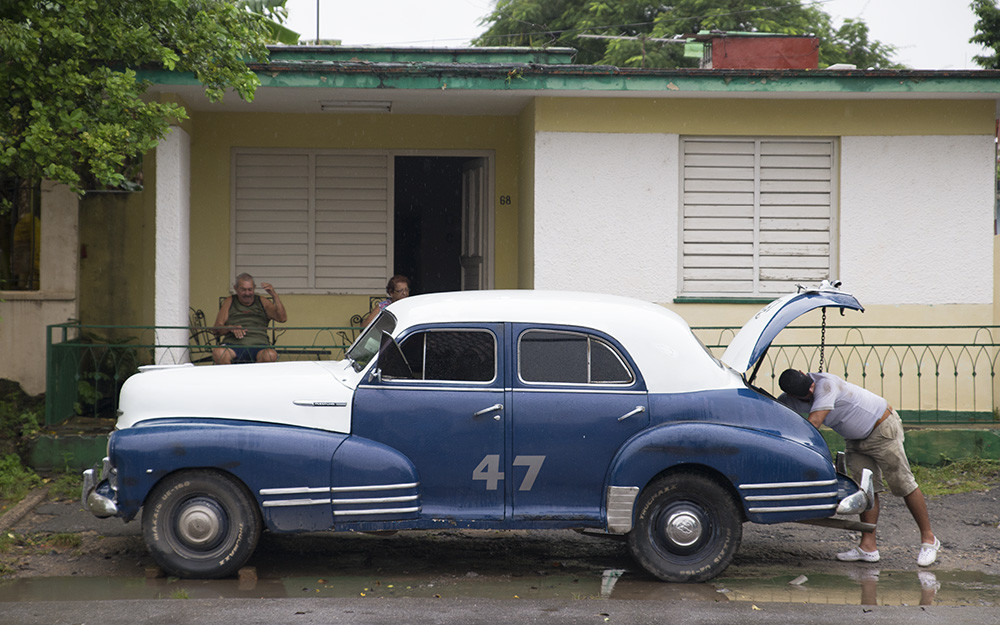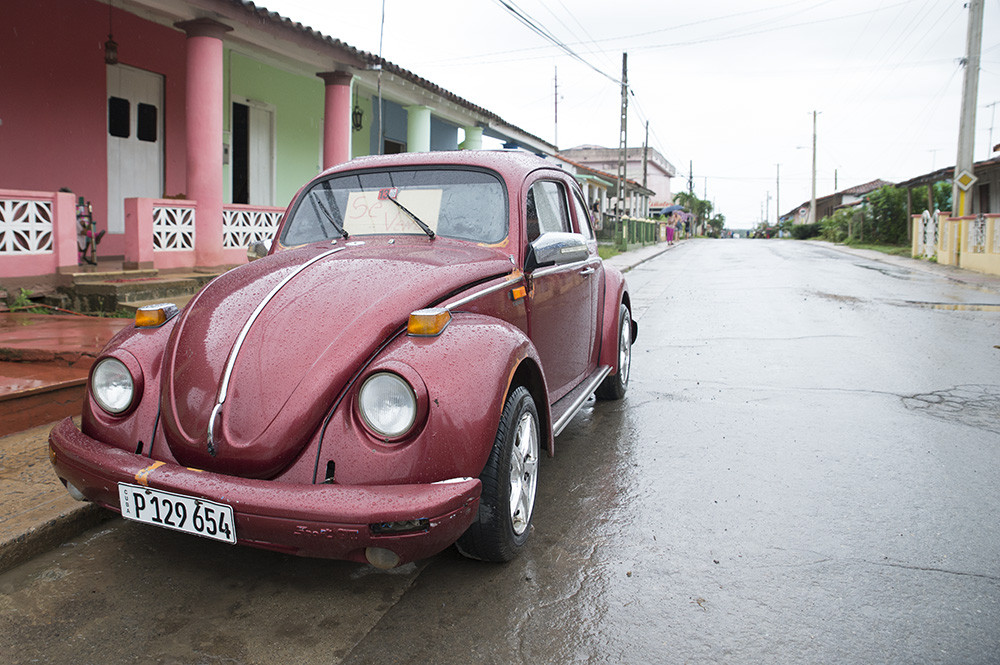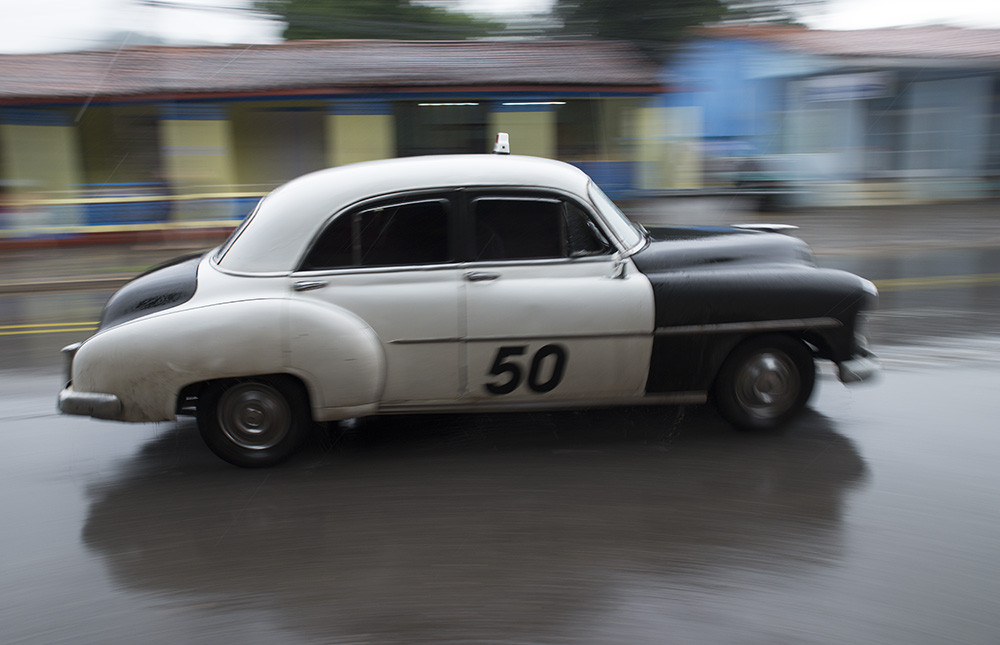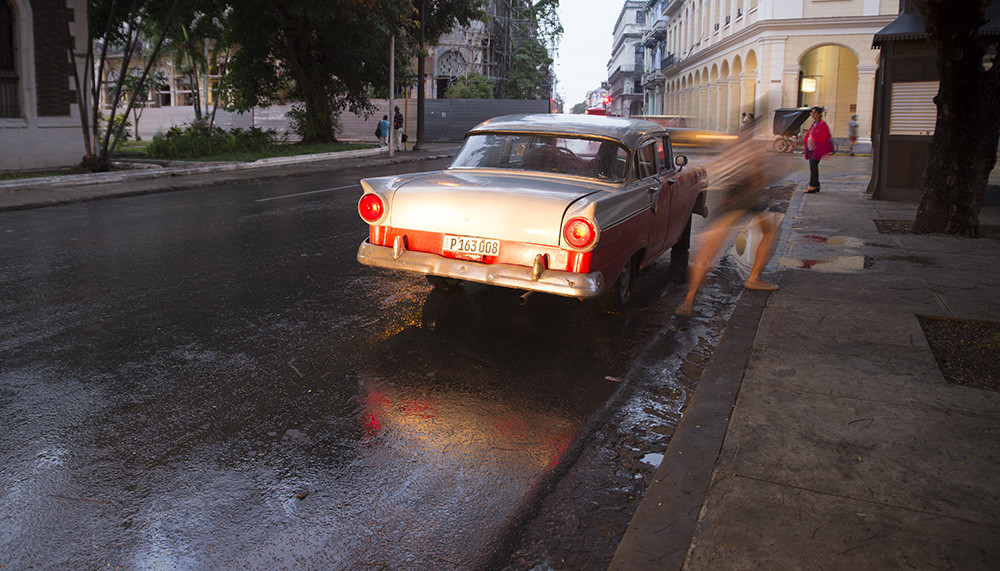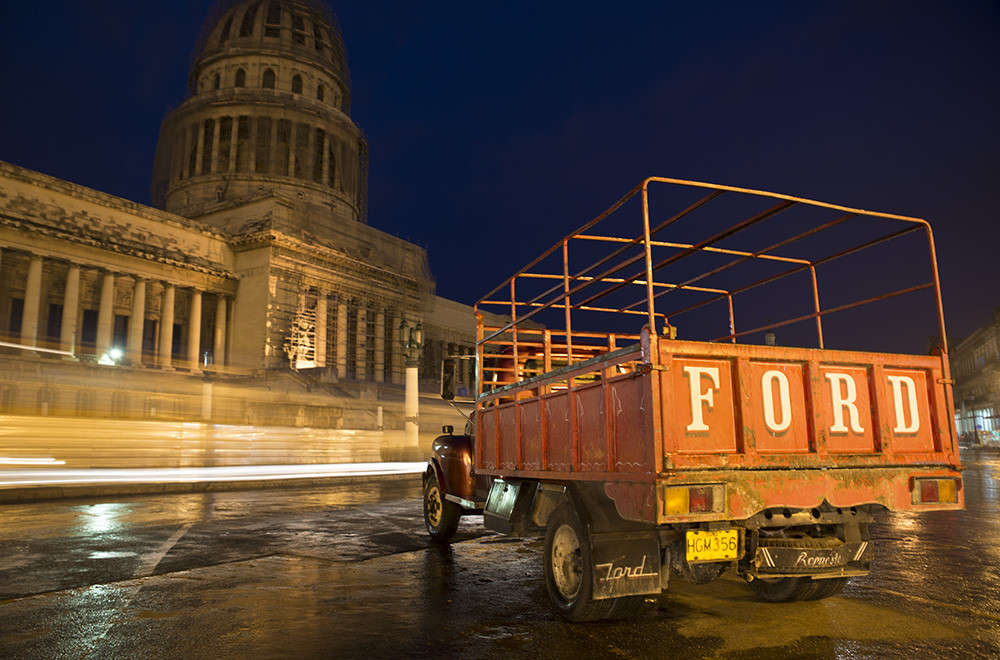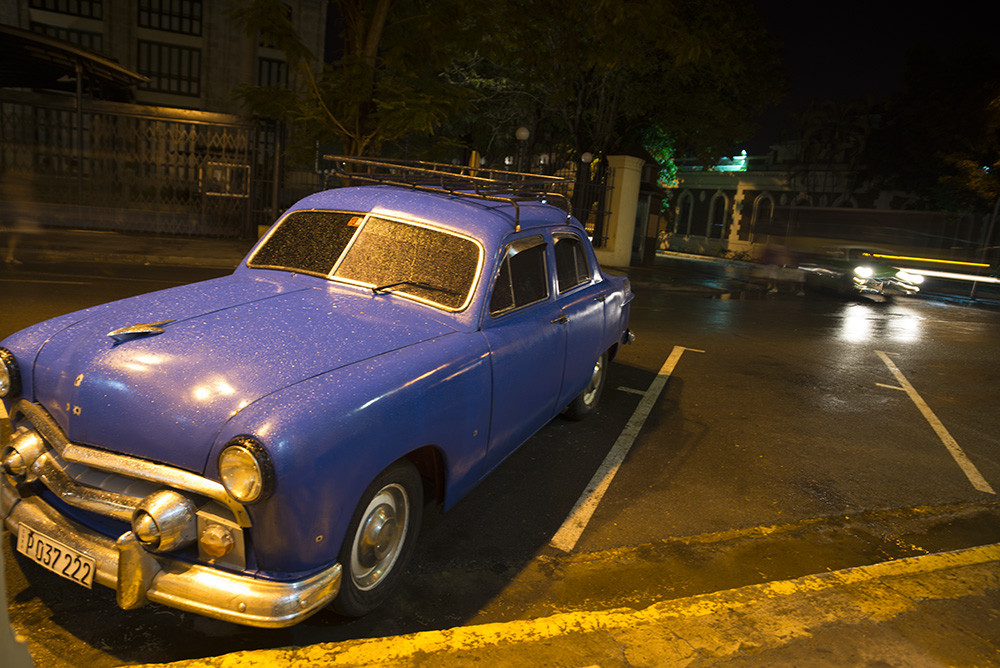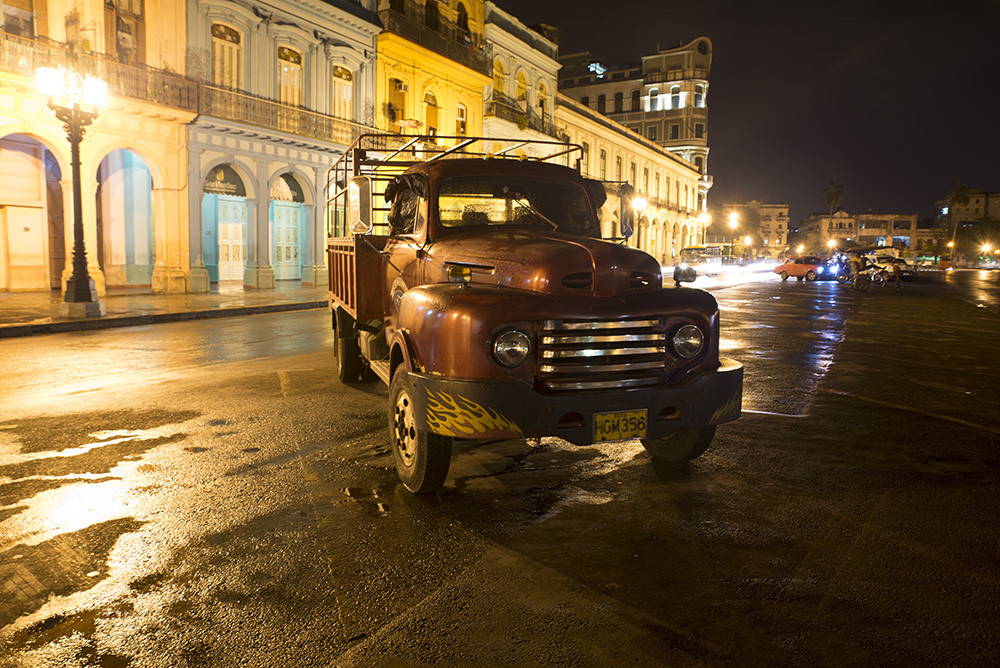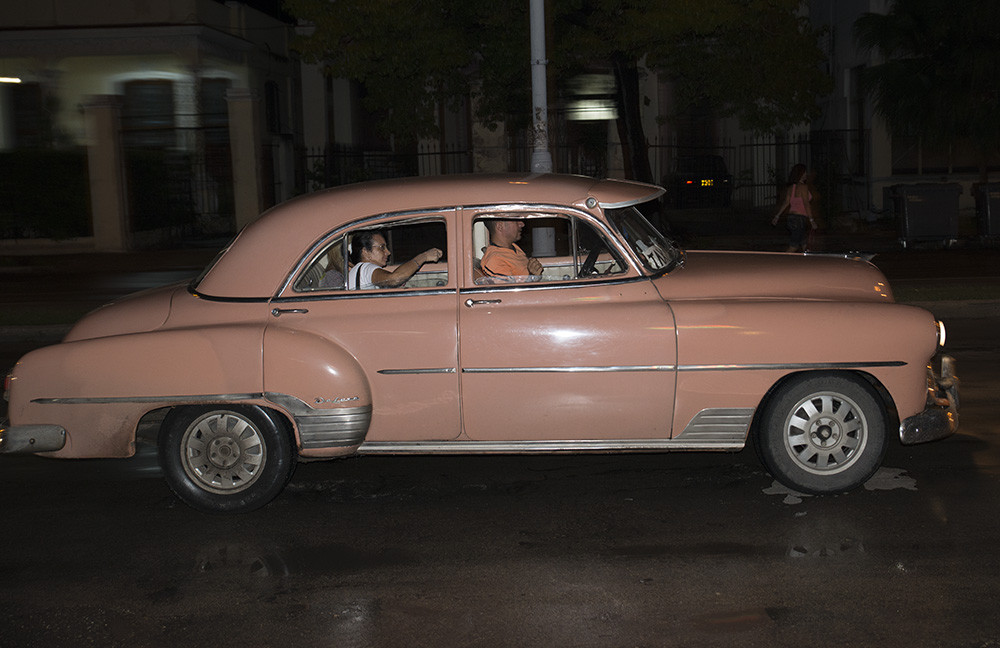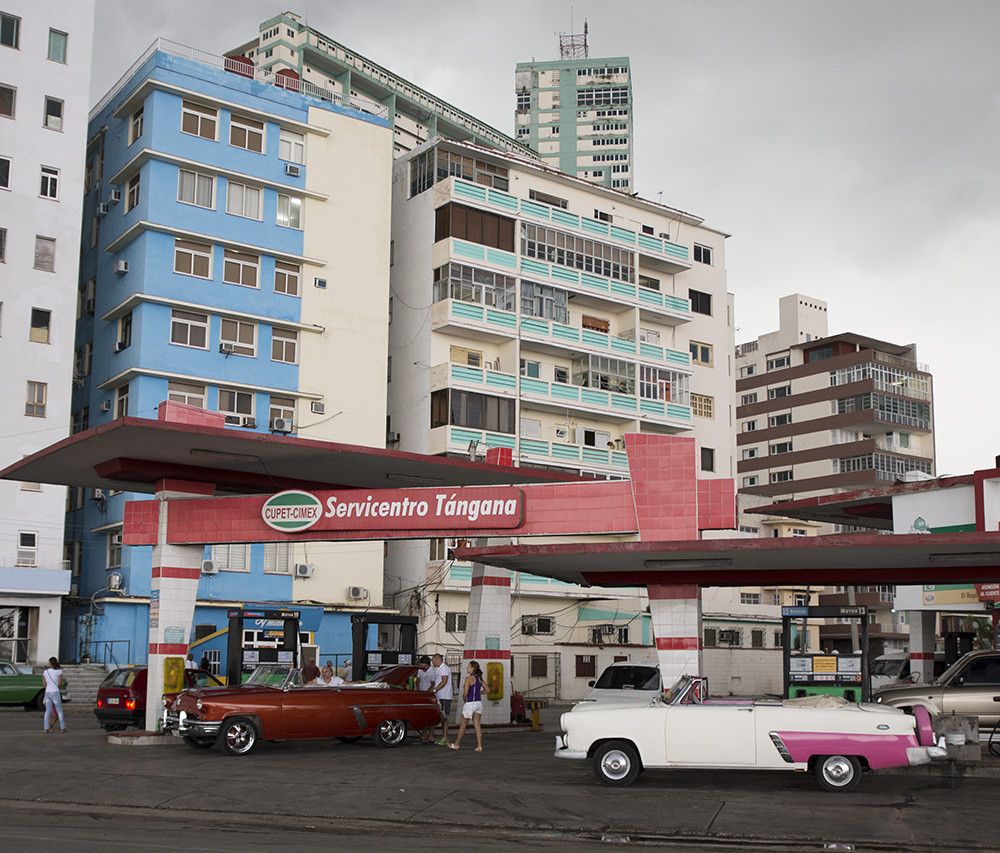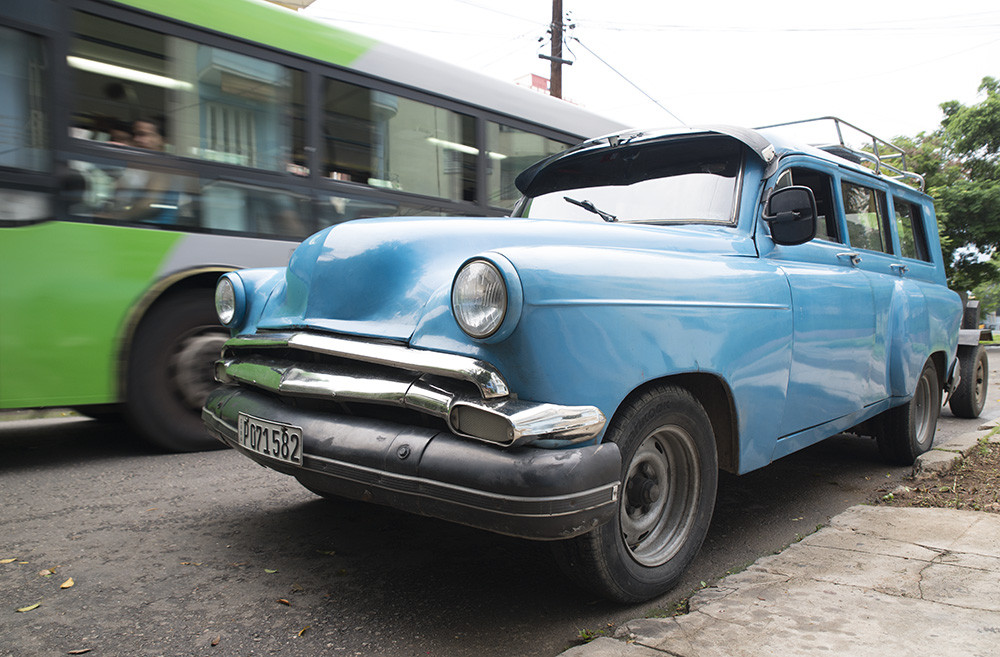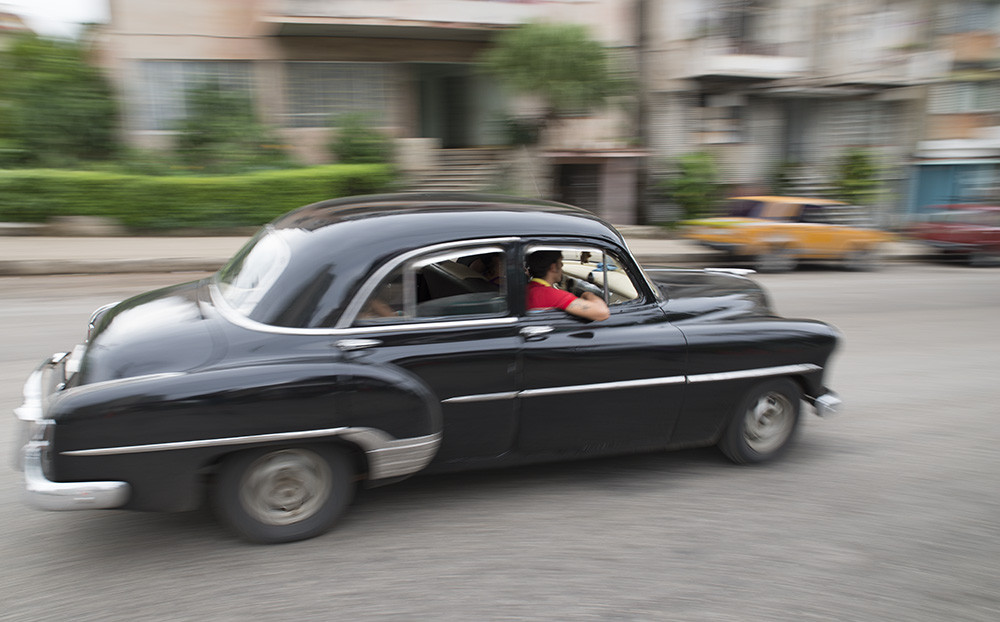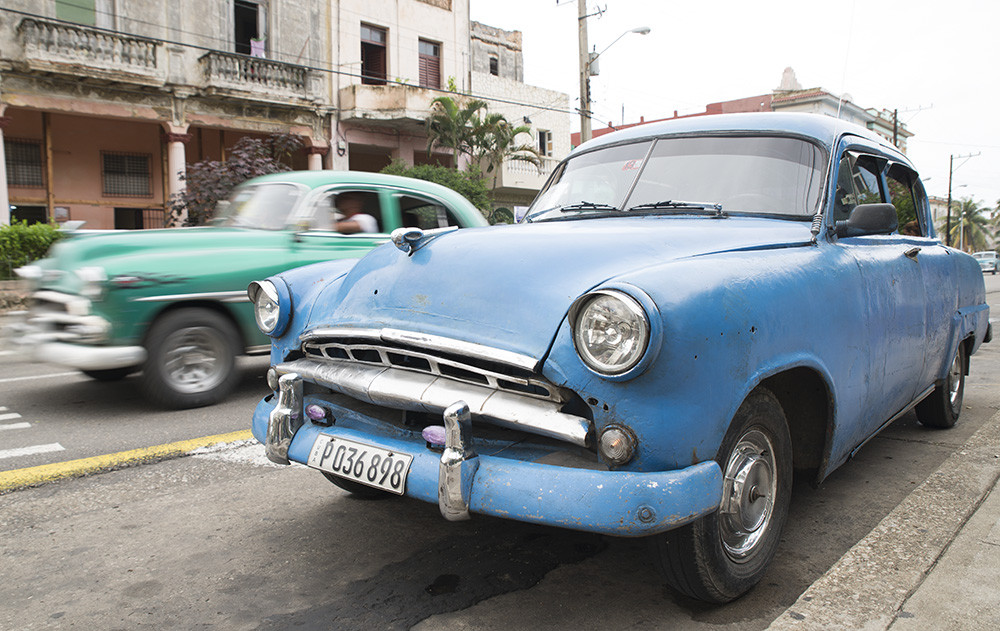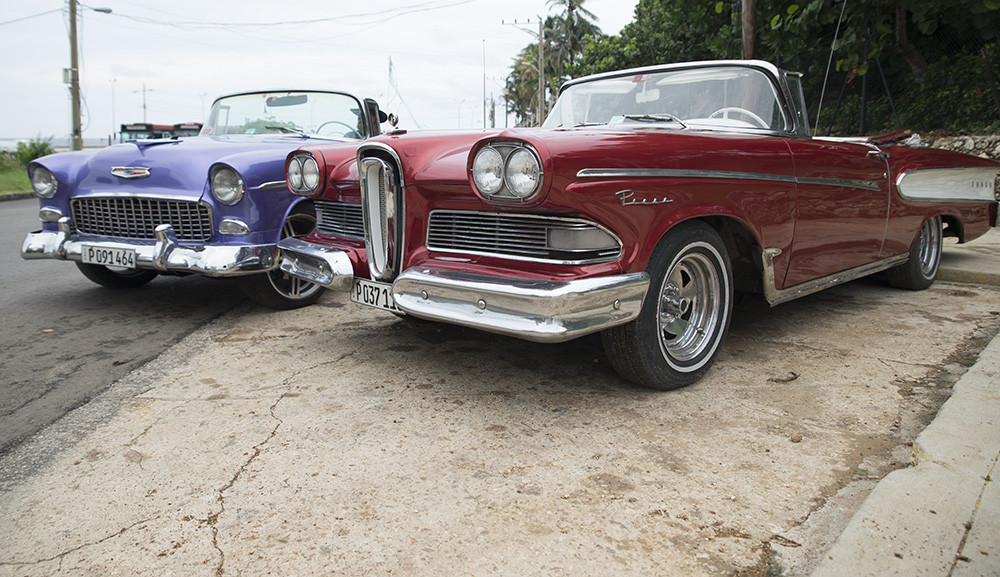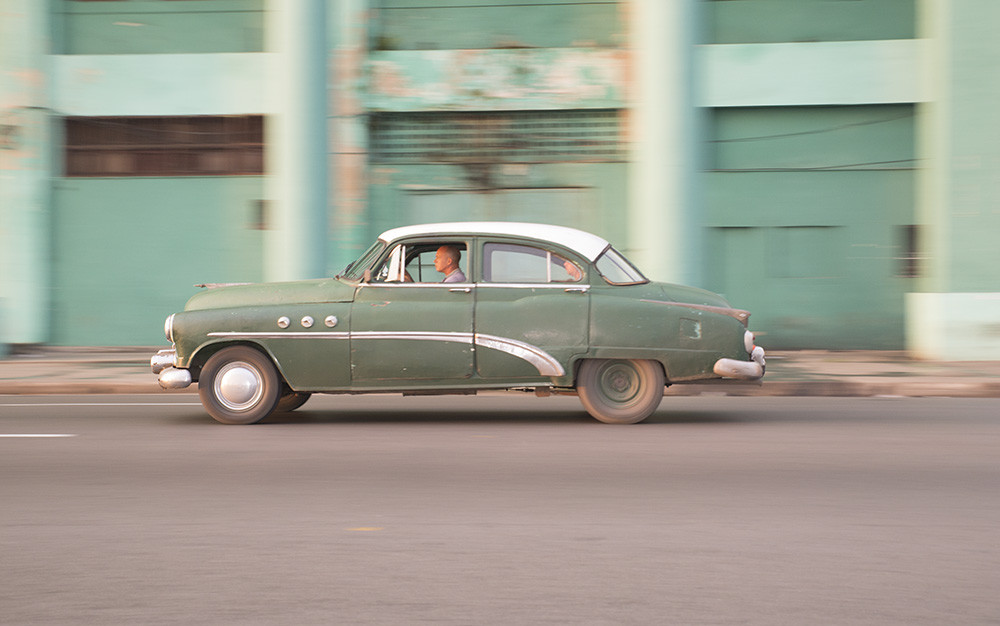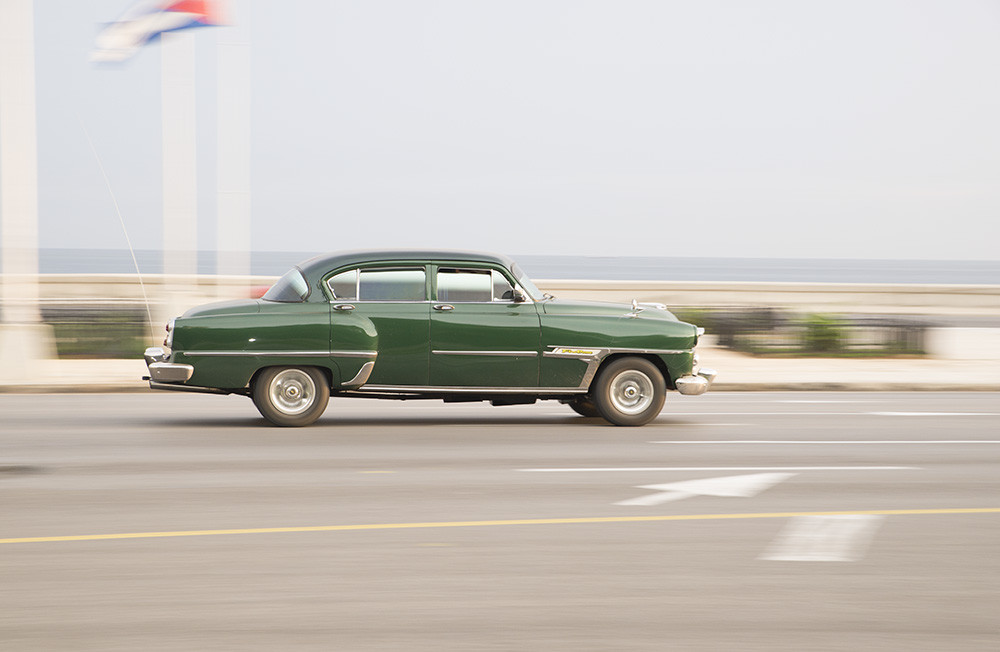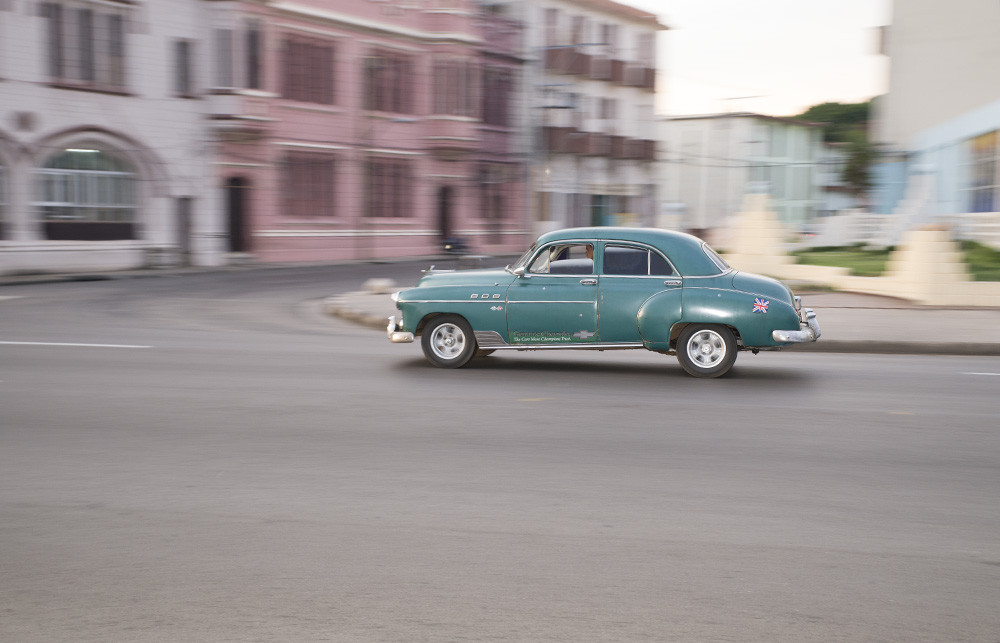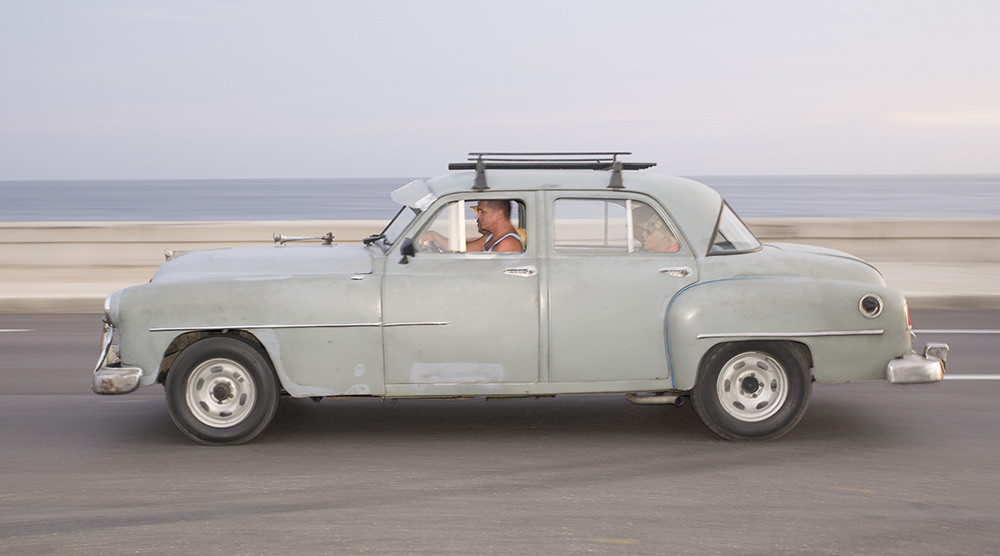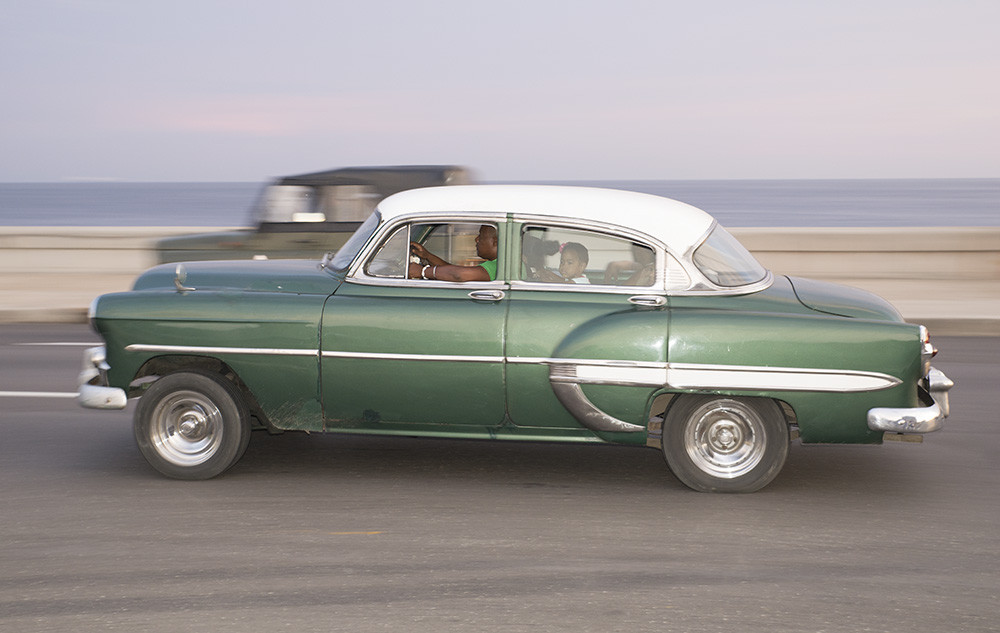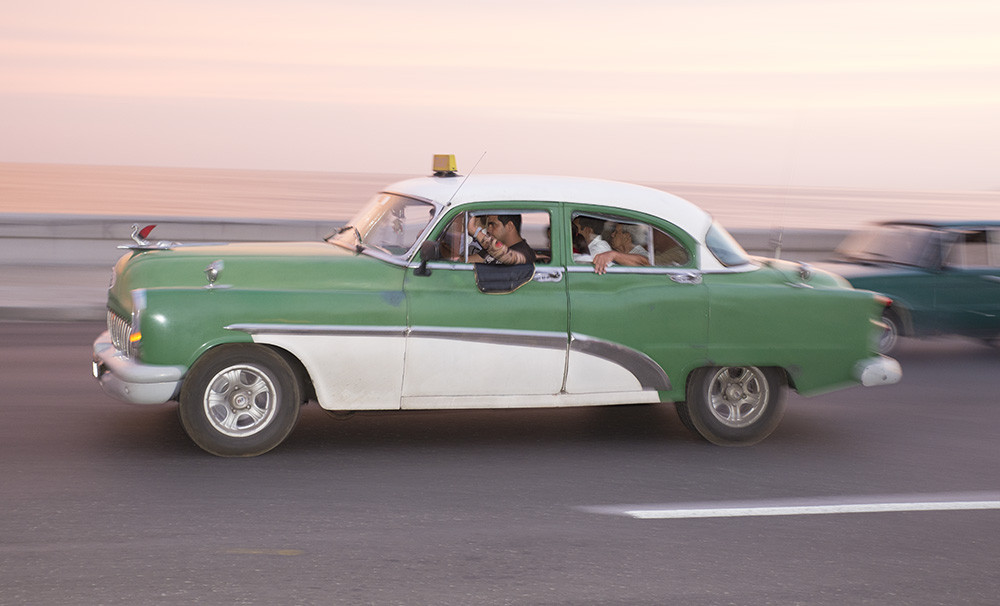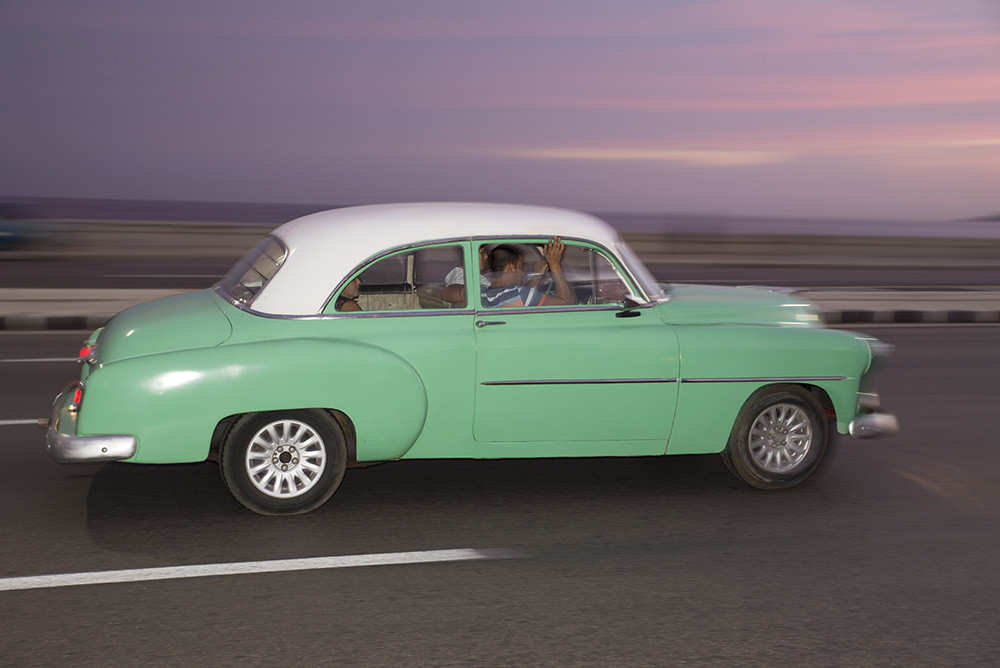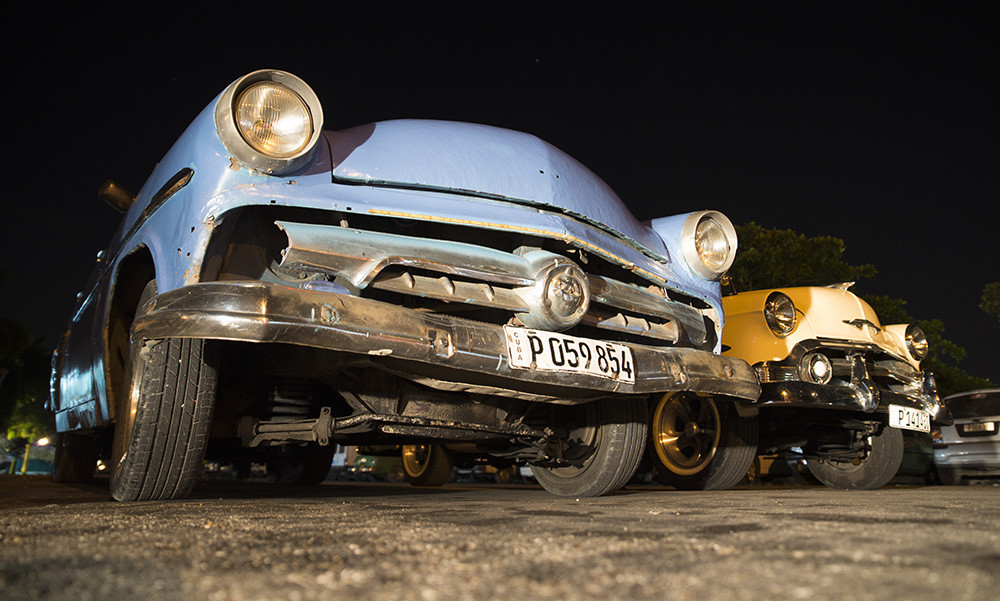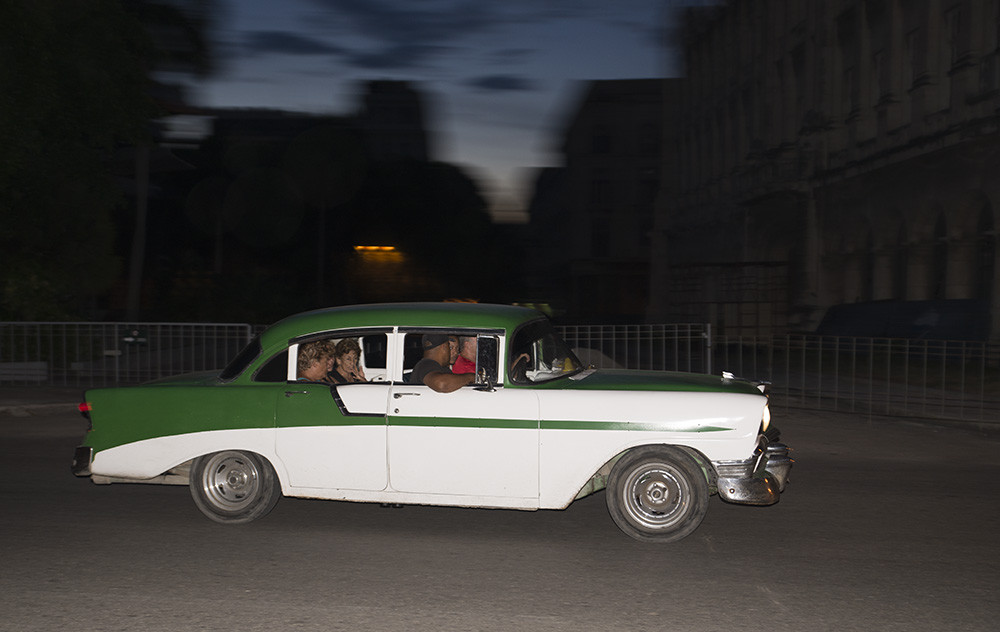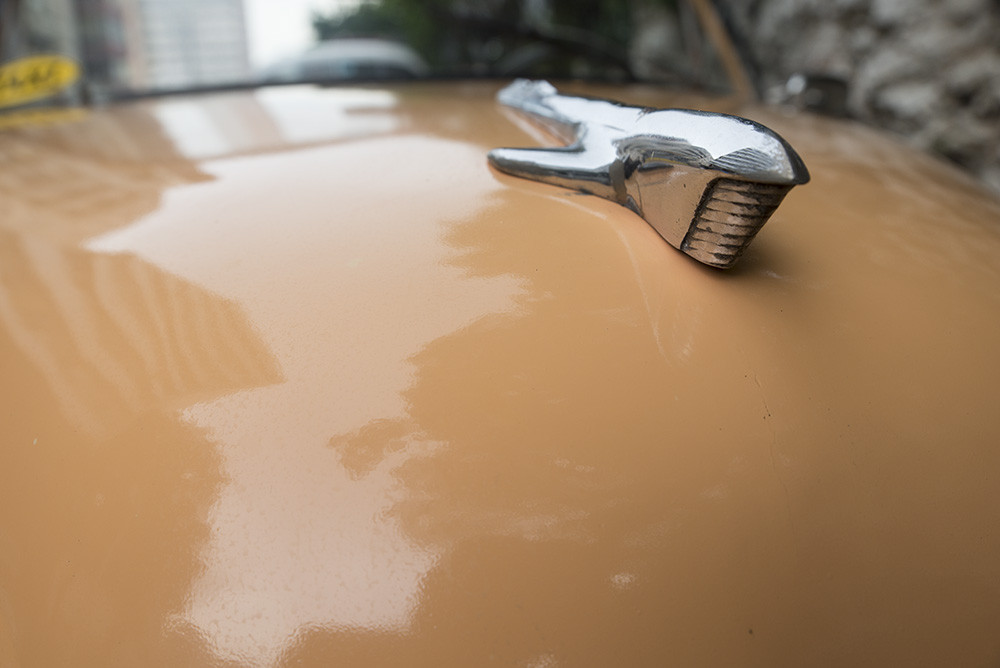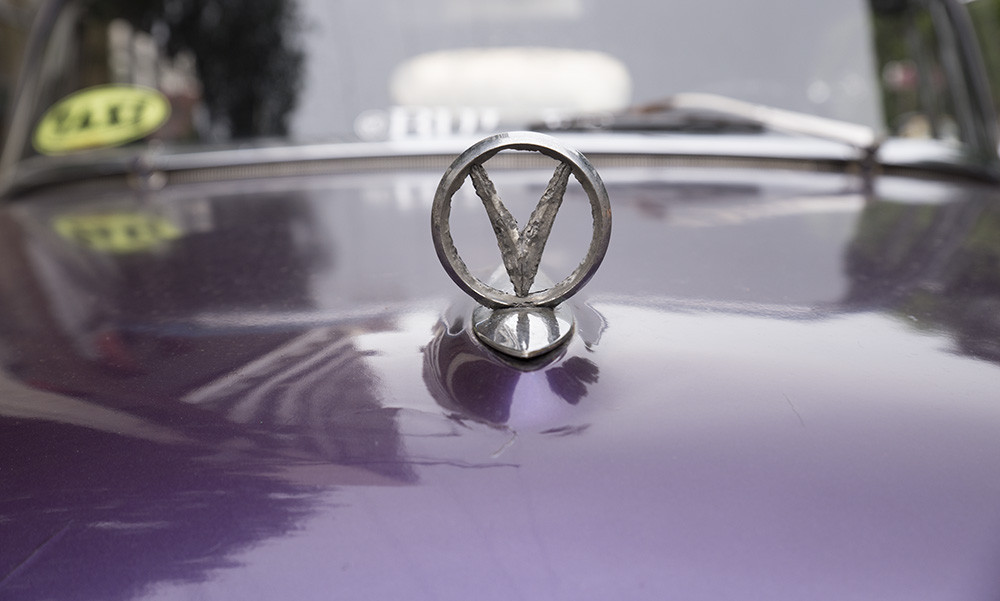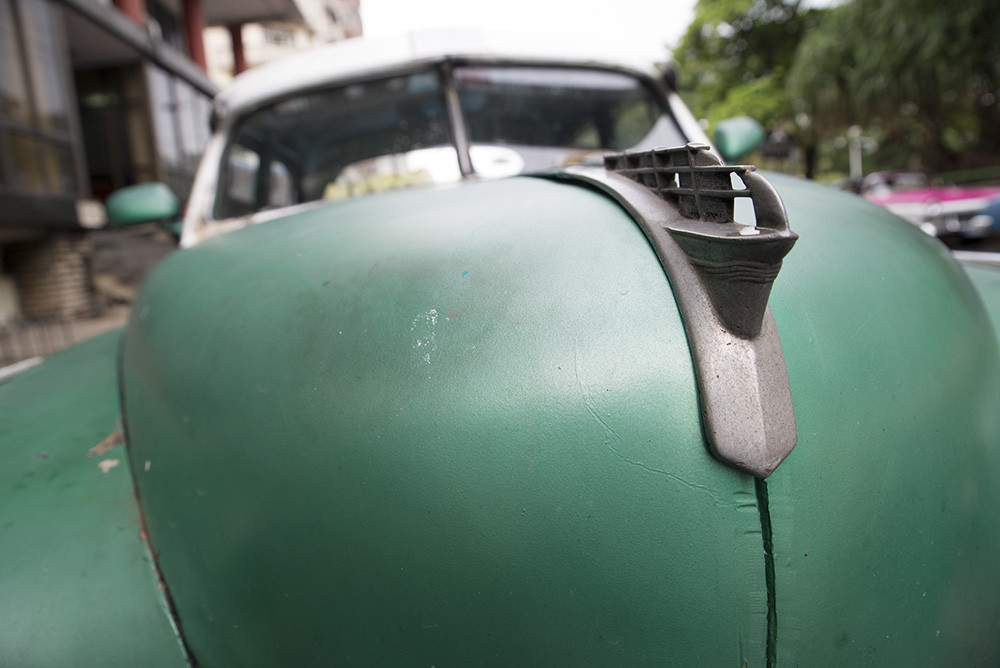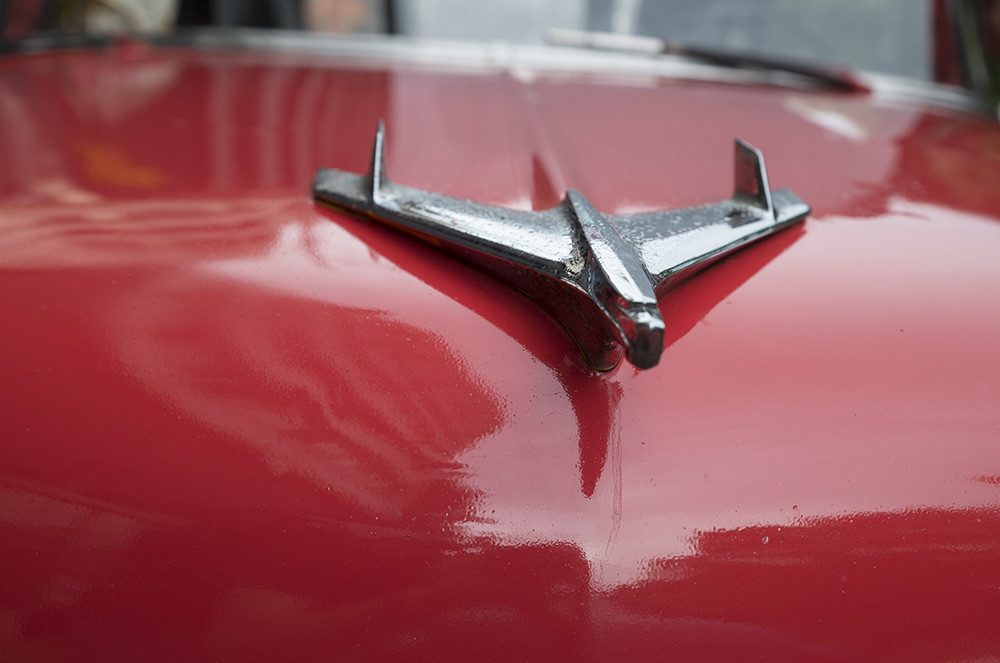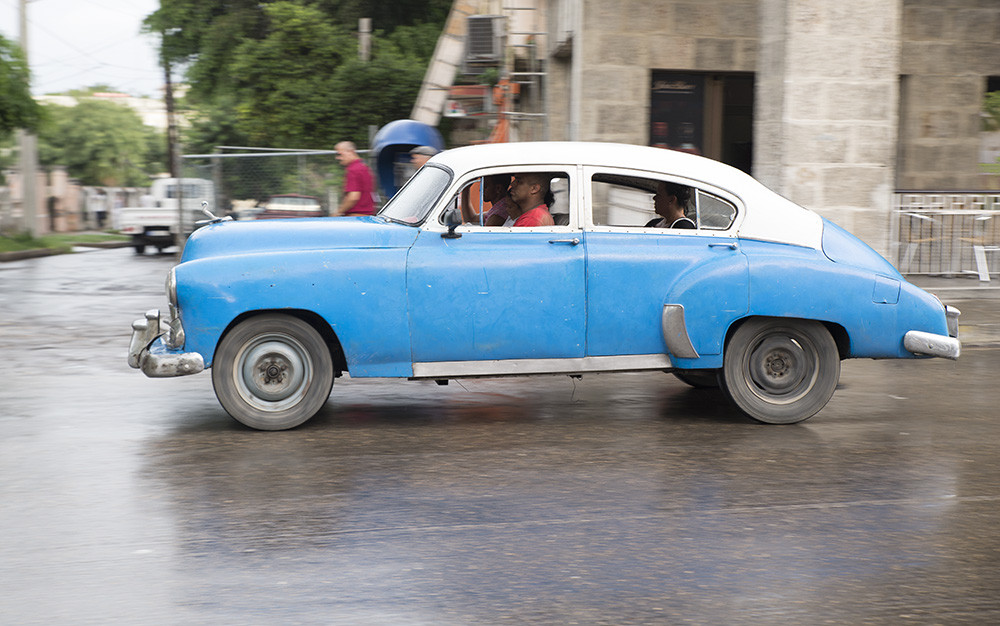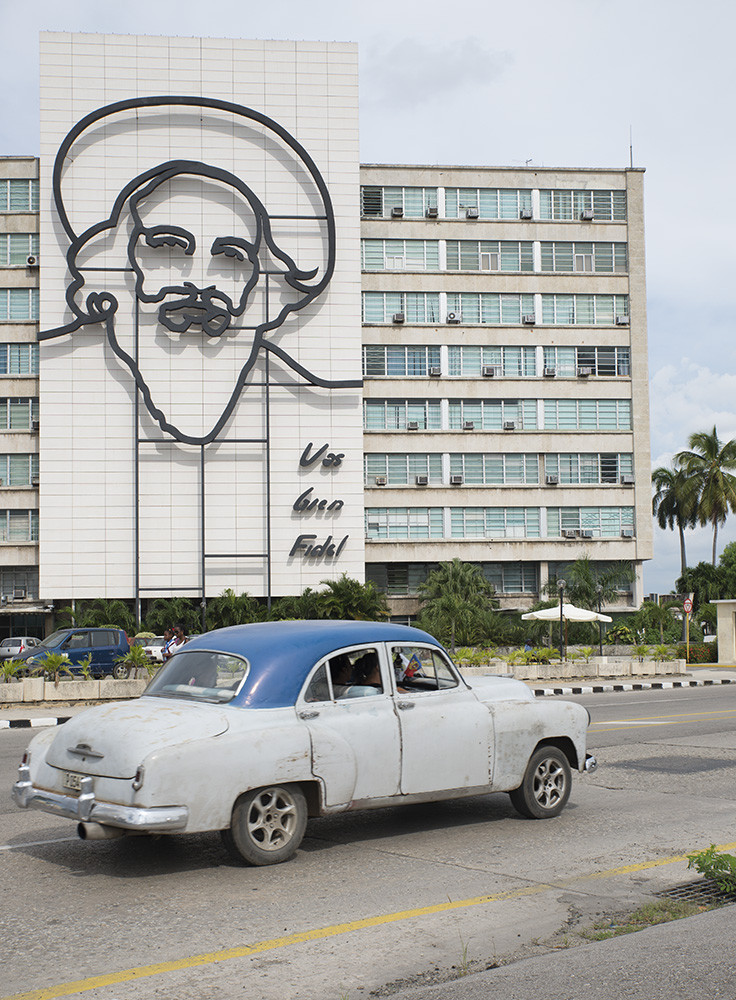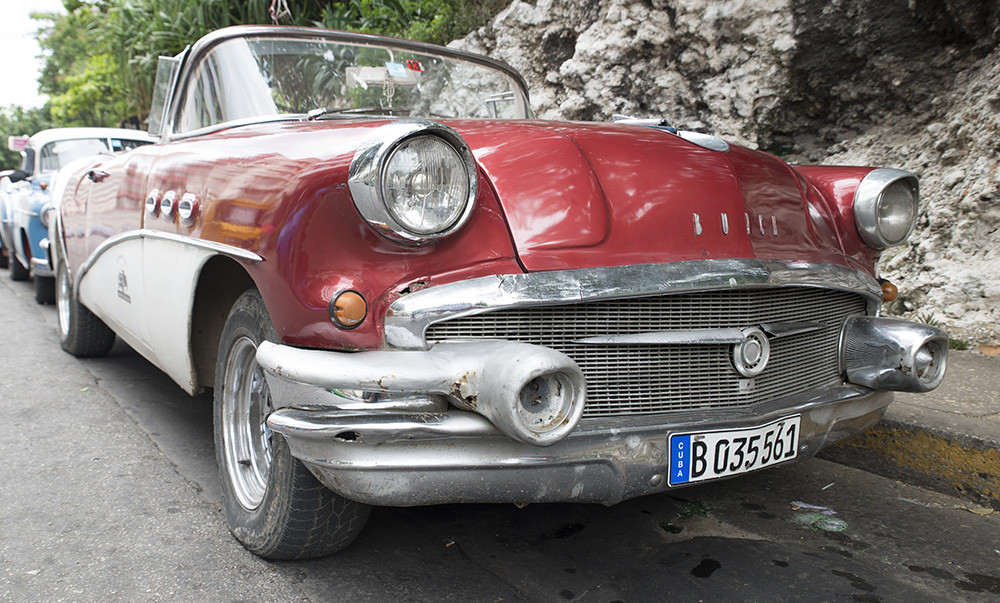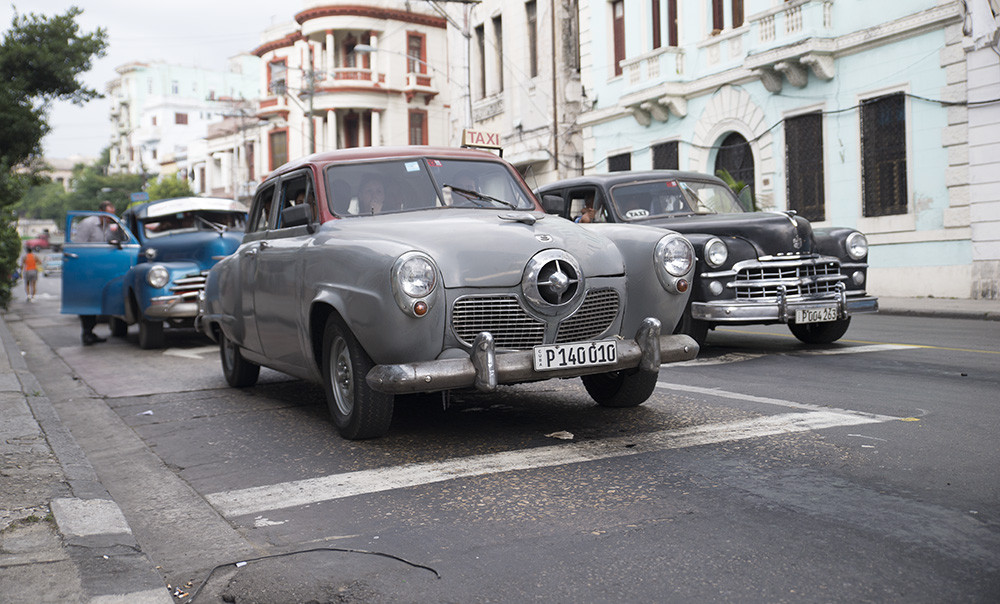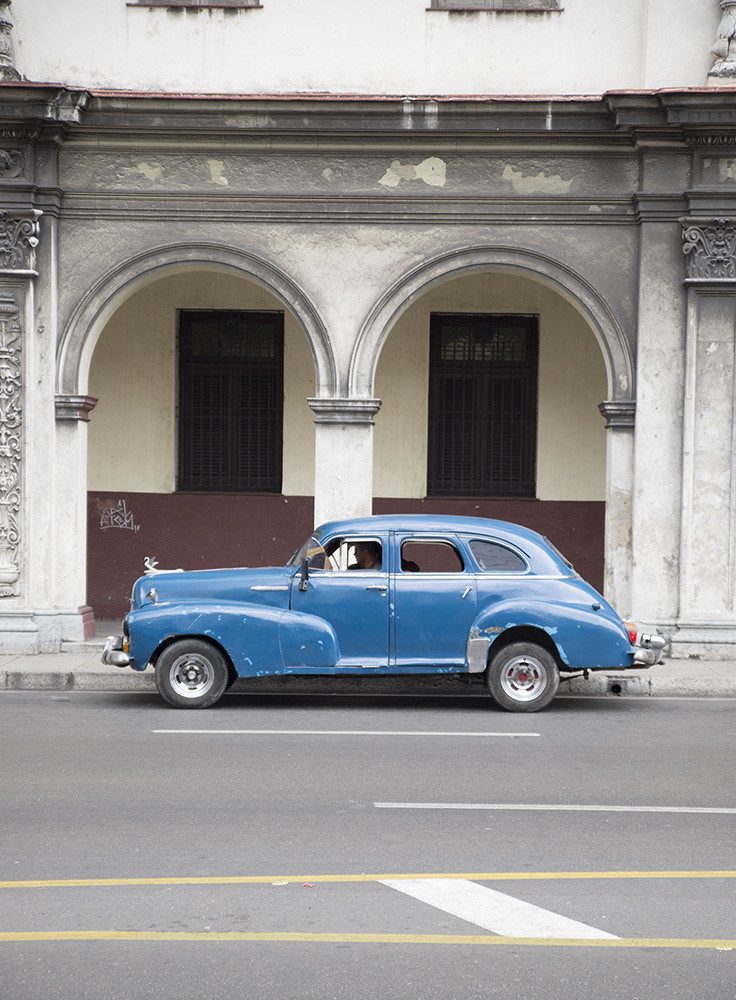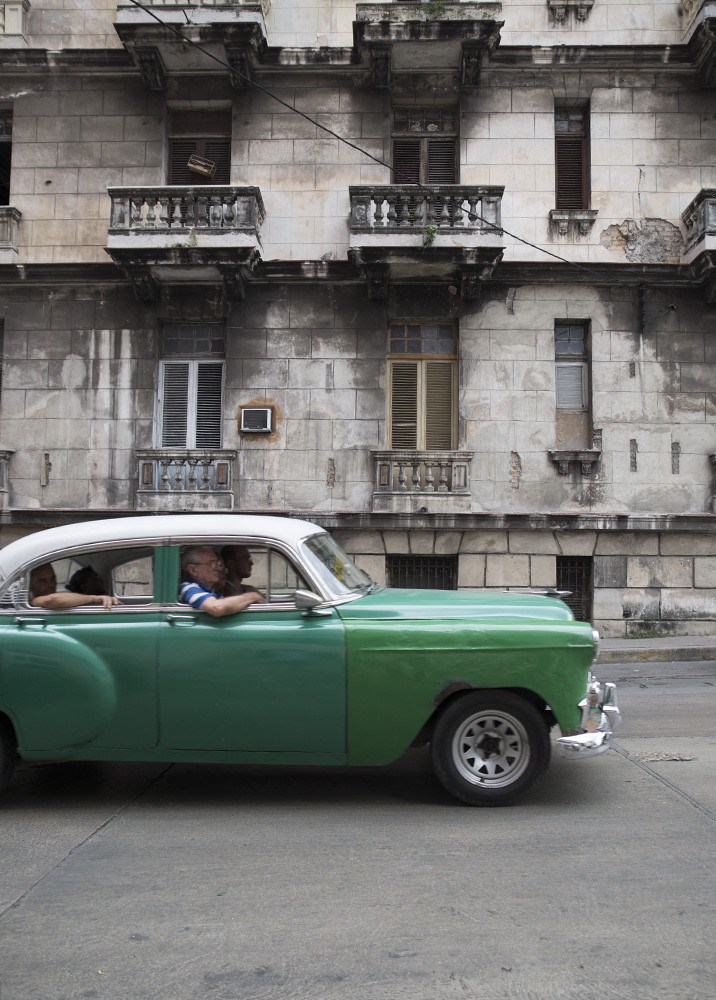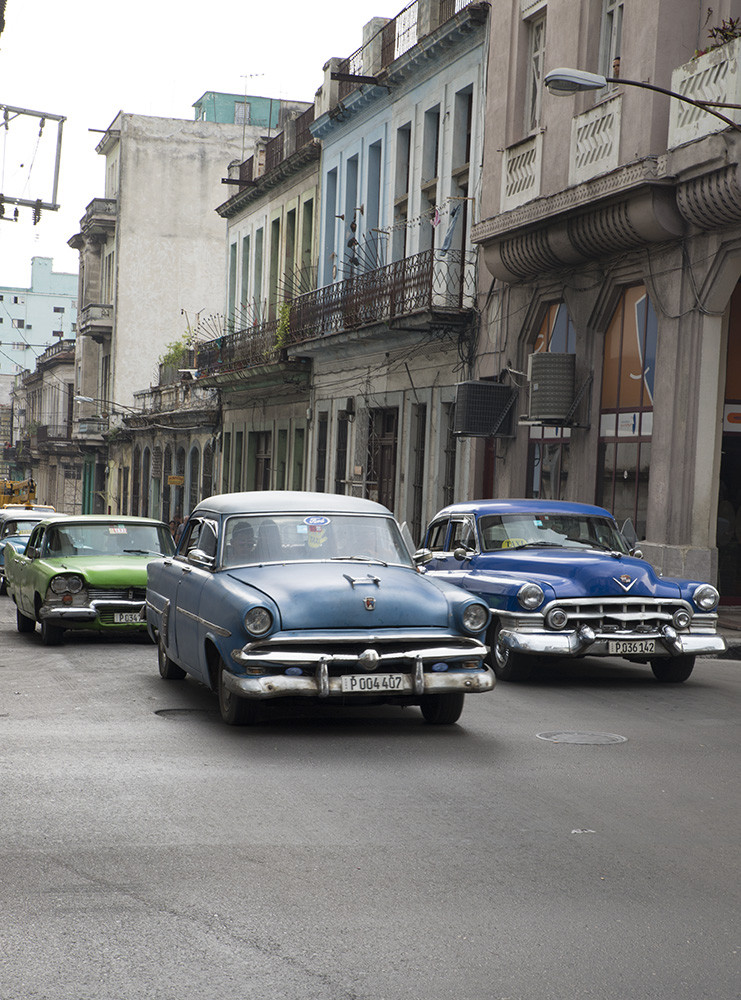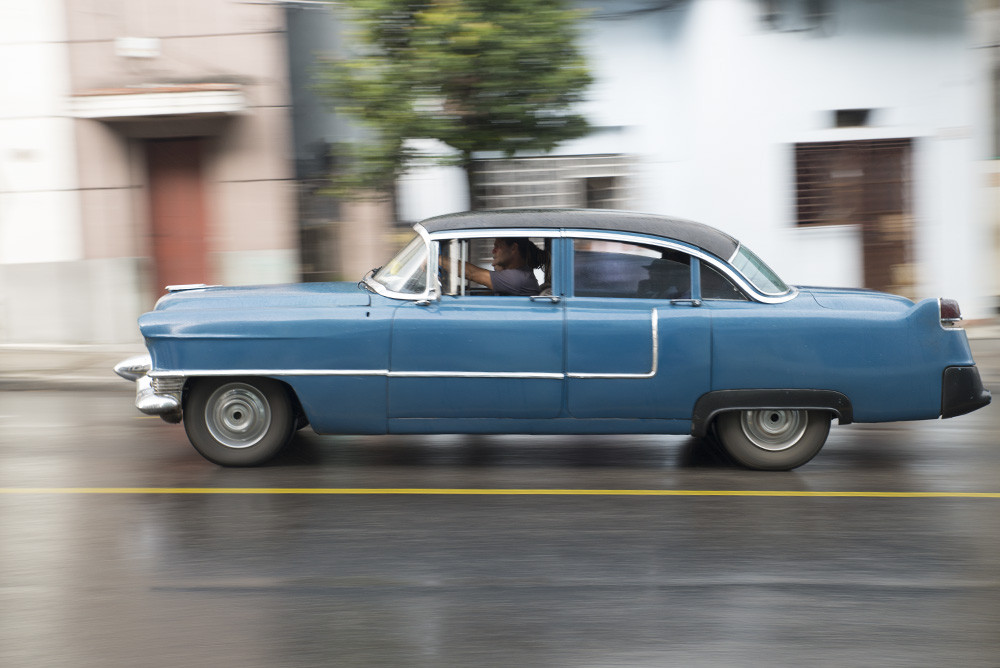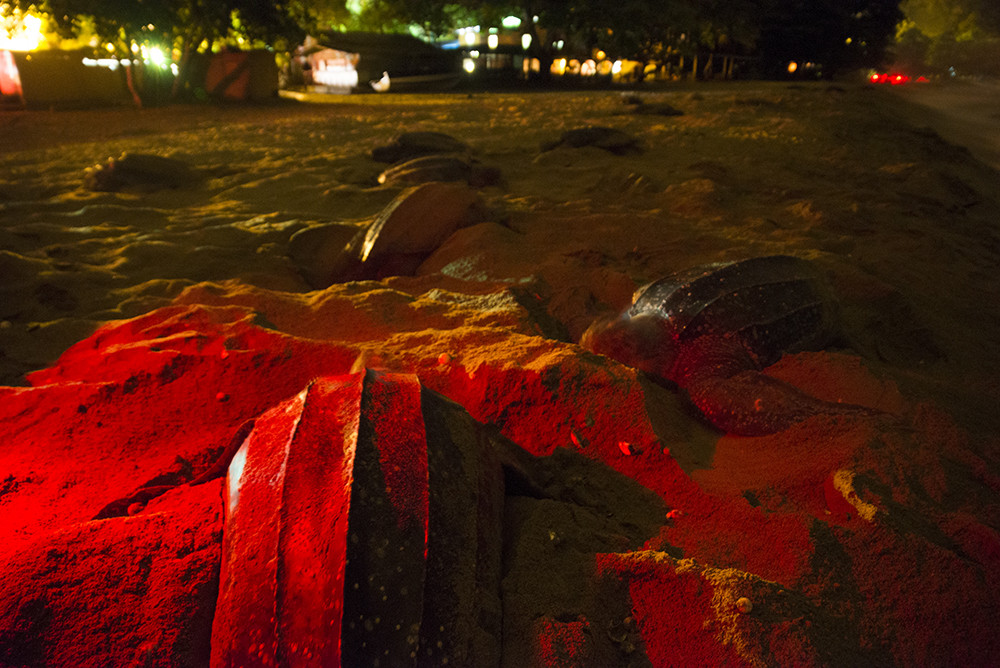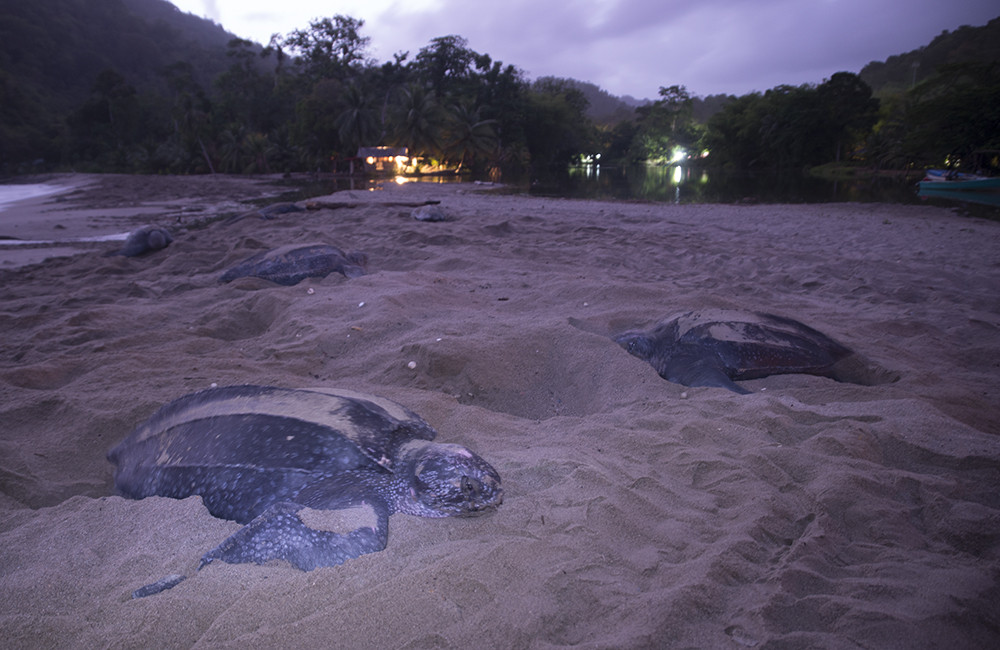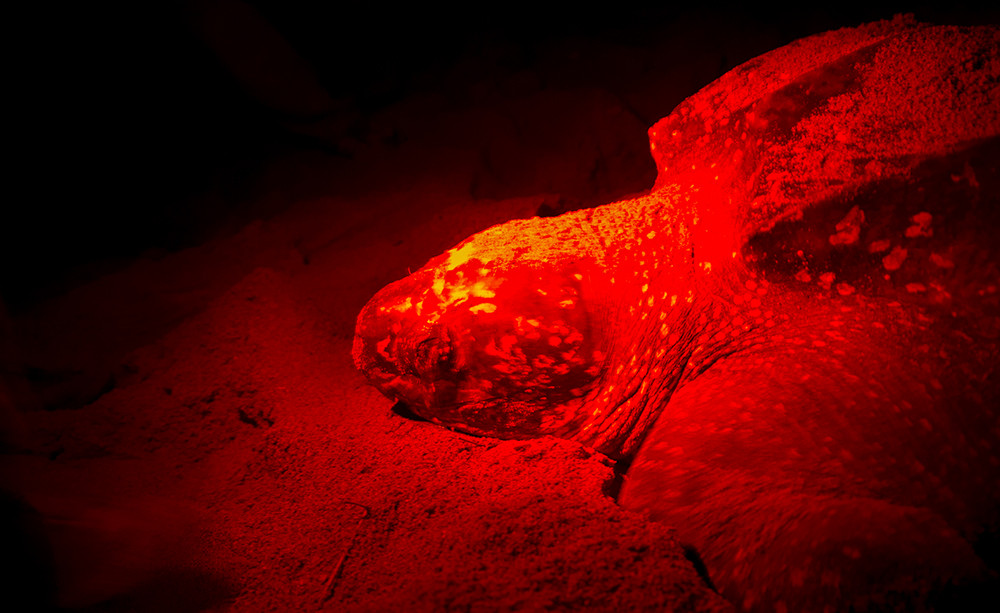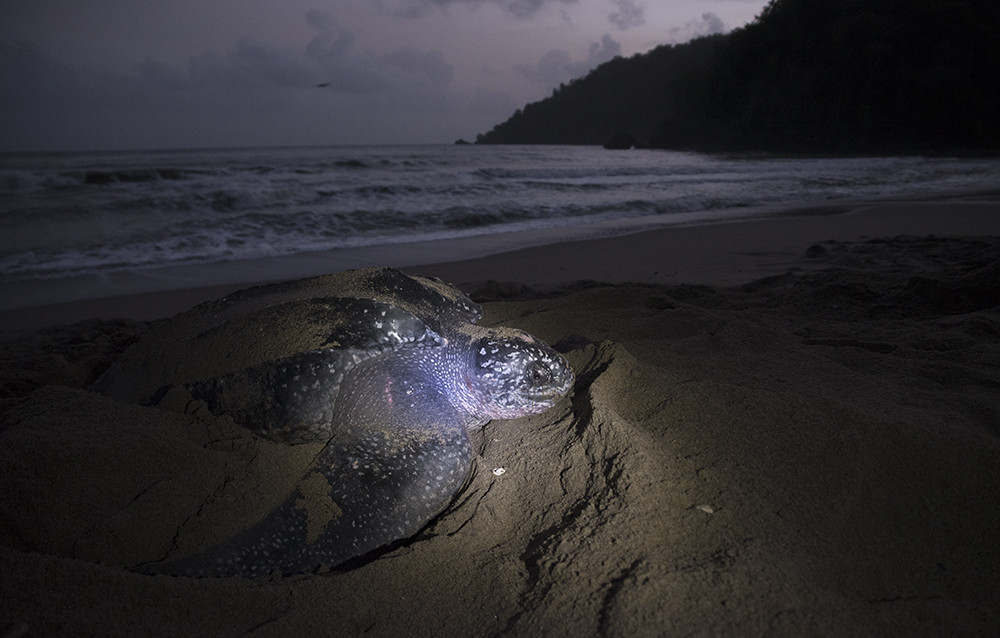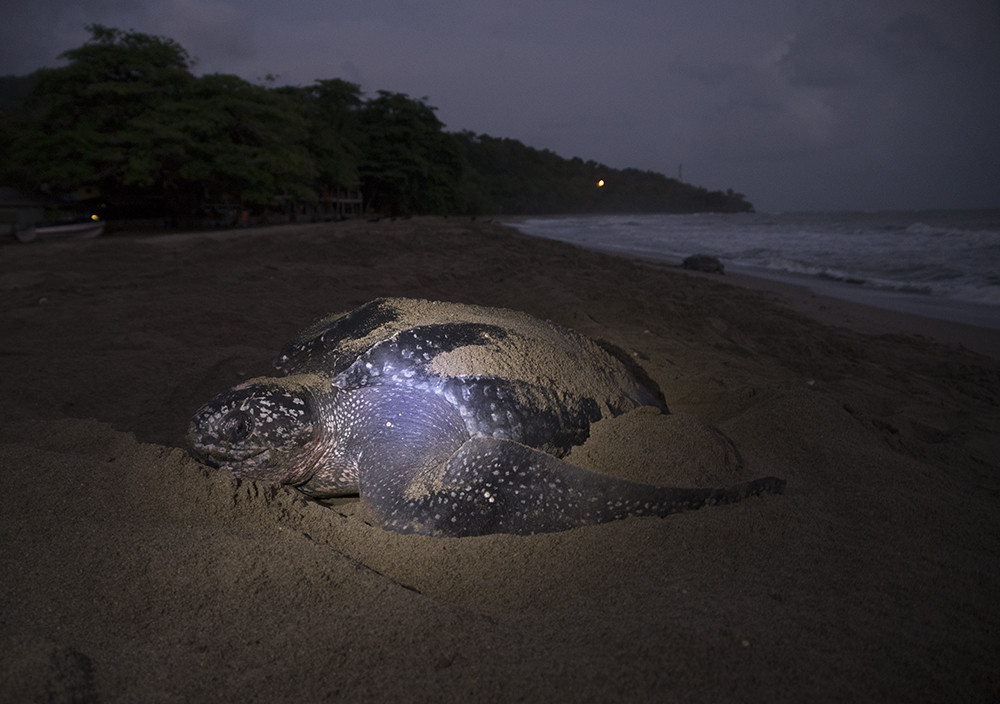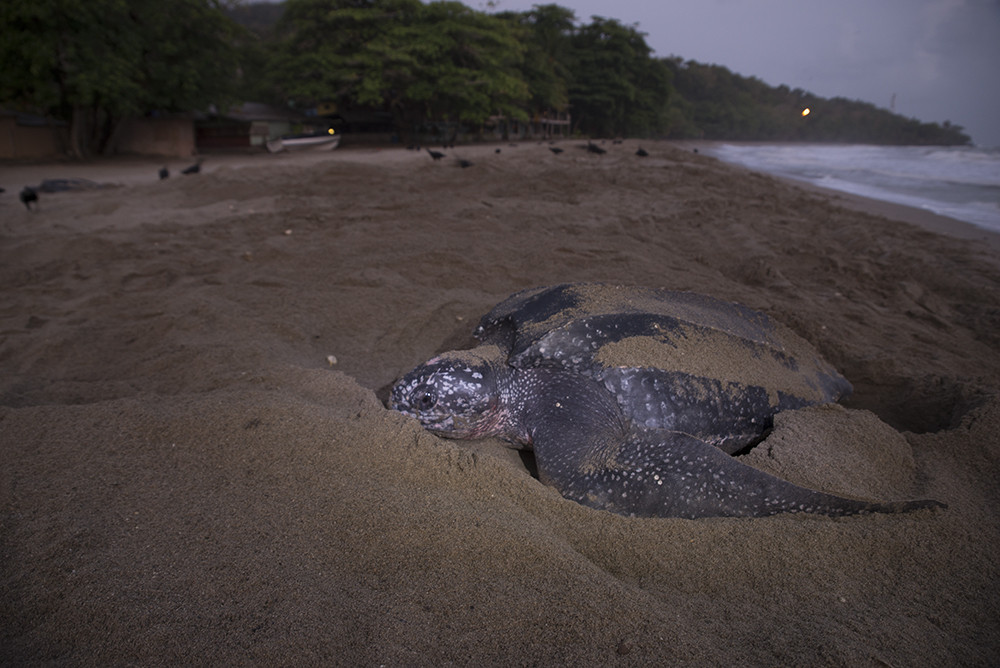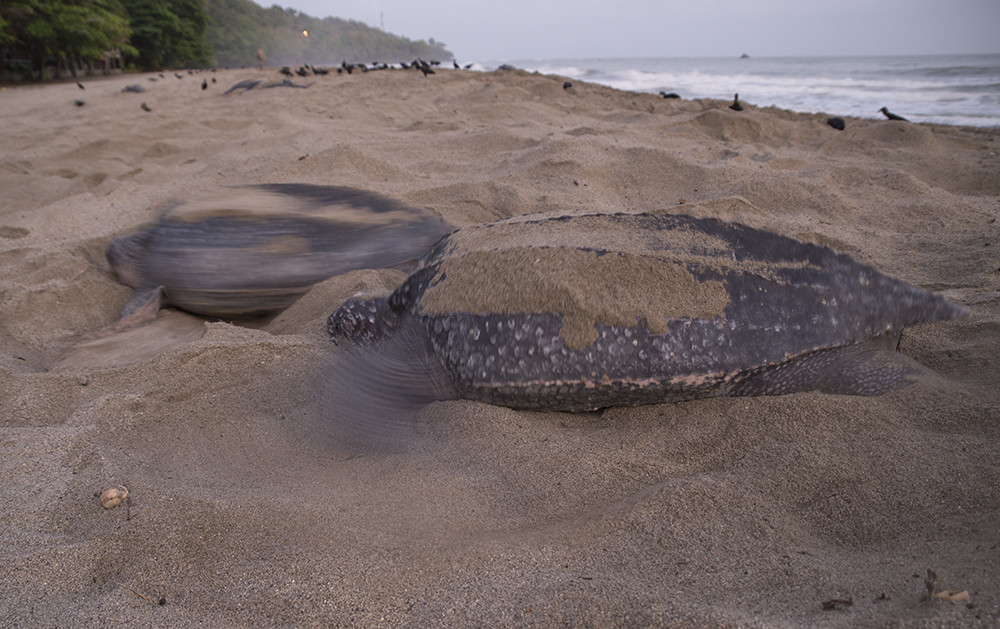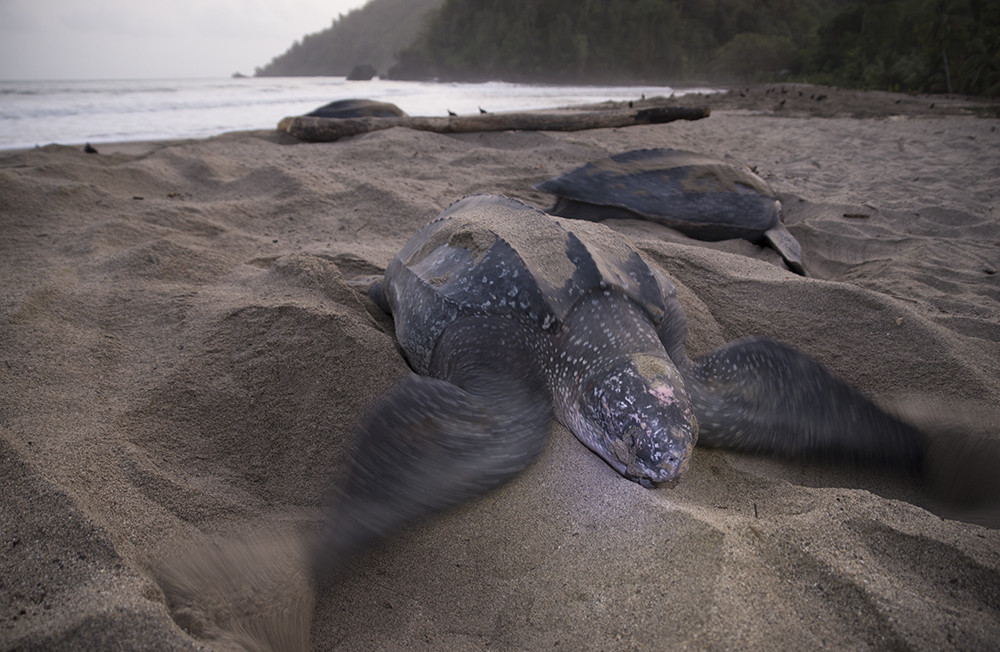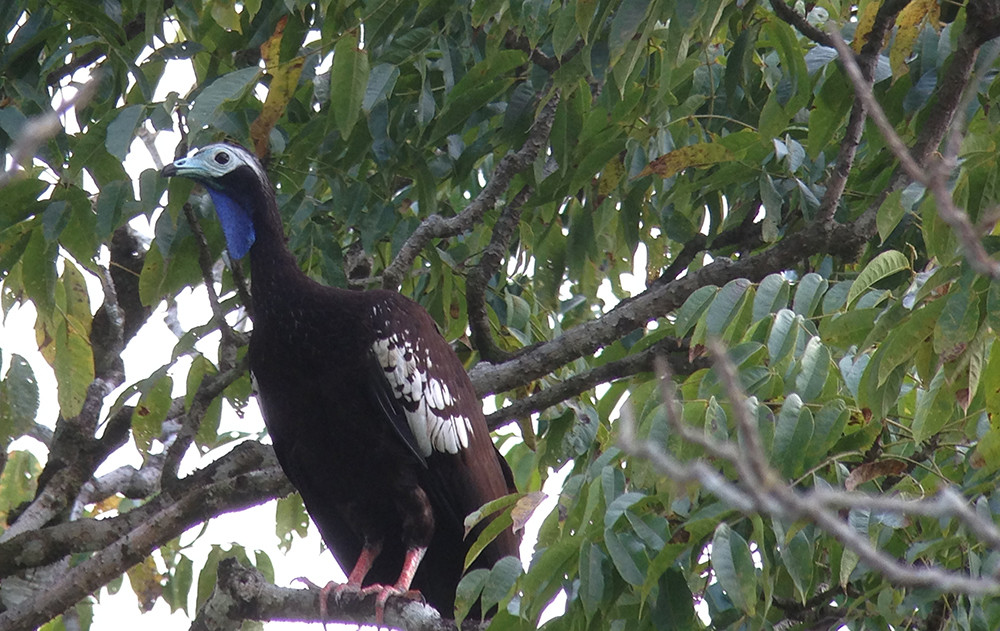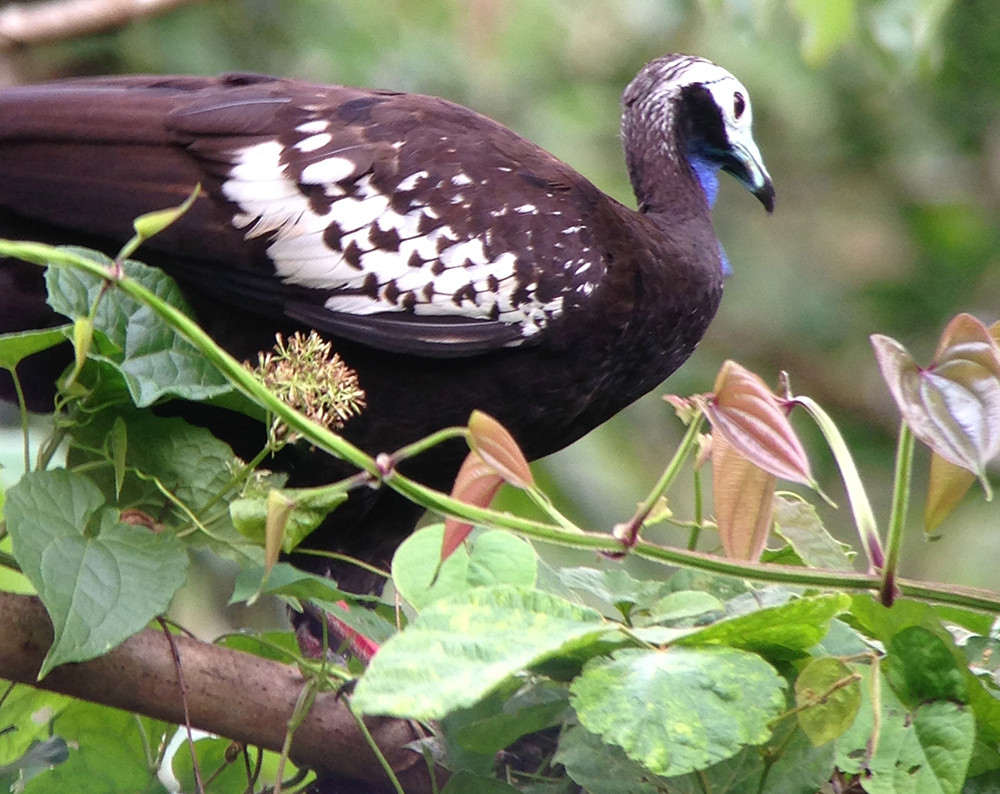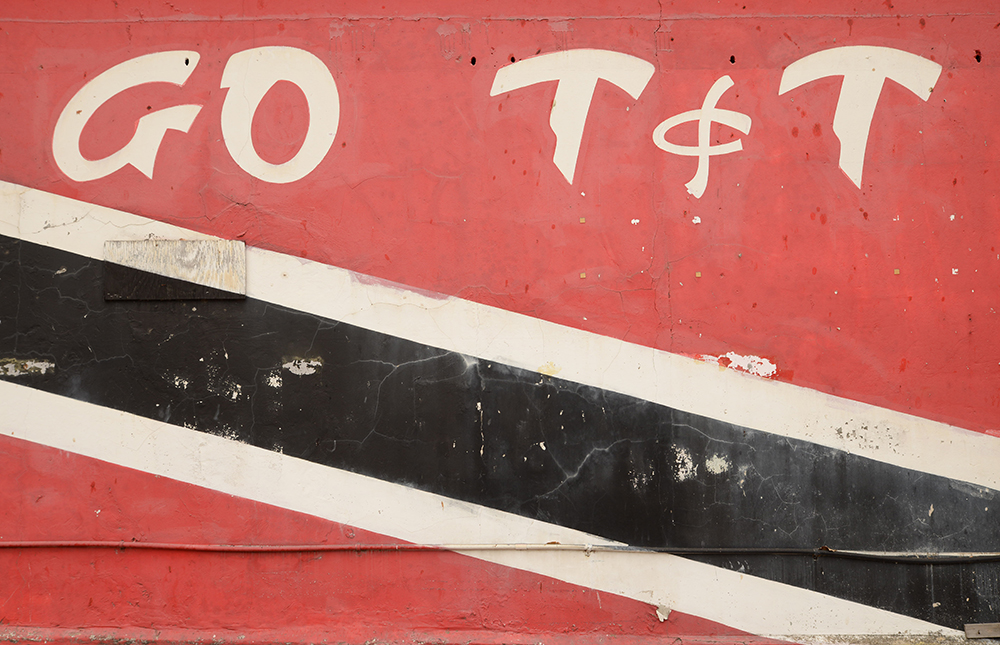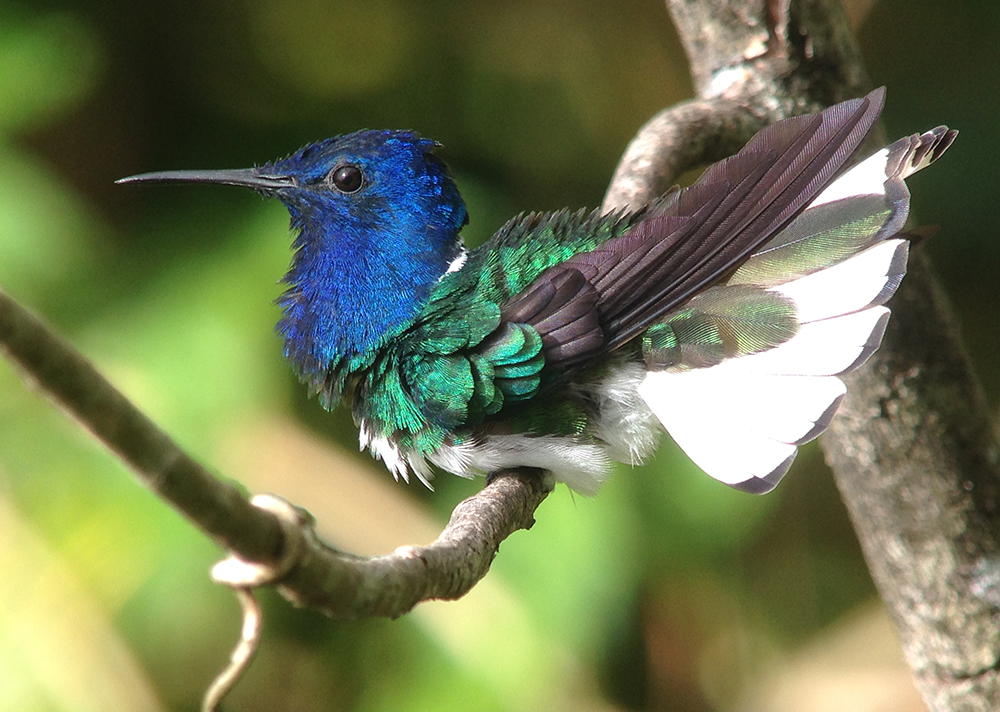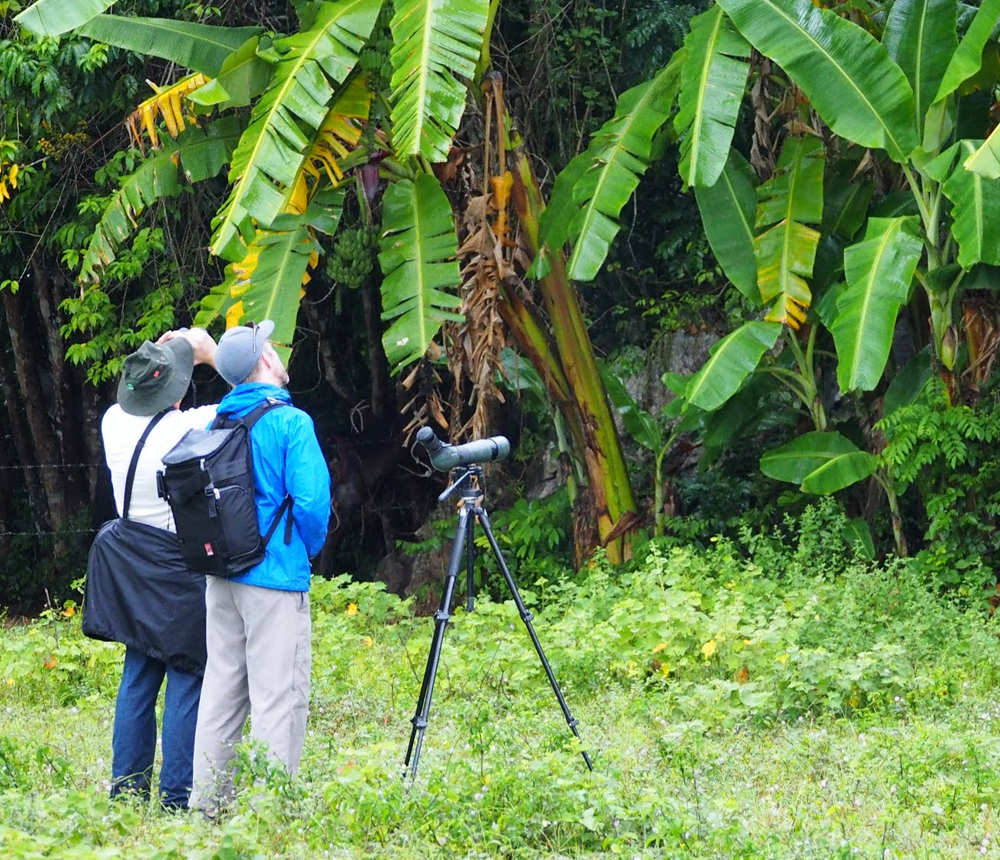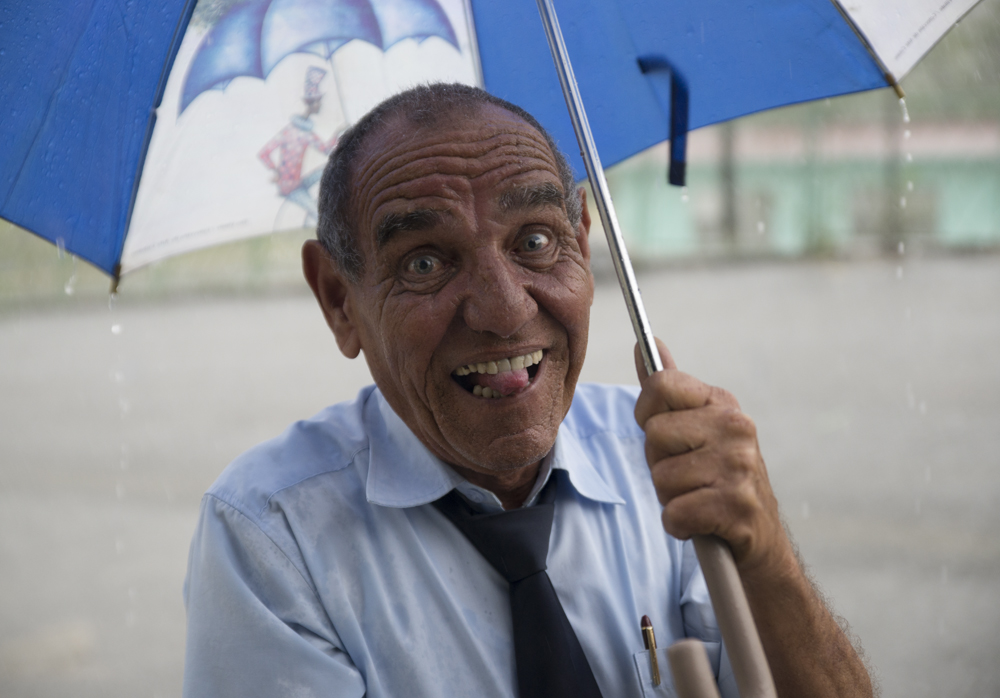Travel Notes: Trinidad and Tobago
This is a regular series where I go to the farthest reaches of the globe, walk around, observe daily life, eat some food, maybe take some photos, and say “wow, that shit would not fly back home.”
It sounds elitist and dismissive, but it’s quite the opposite. If I haven’t expressed some sort of disbelief with what I have experienced while traveling, I simply haven’t explored deeply enough. This is why I keep reaching for my passport and, this time, it was to go to Trinidad and Tobago.
It was my second time to a Caribbean island in less than a year. I saw some great birds but I also experienced another beautiful country. I wasn’t disappointed.
English is the Official Spoken Language, Kind Of
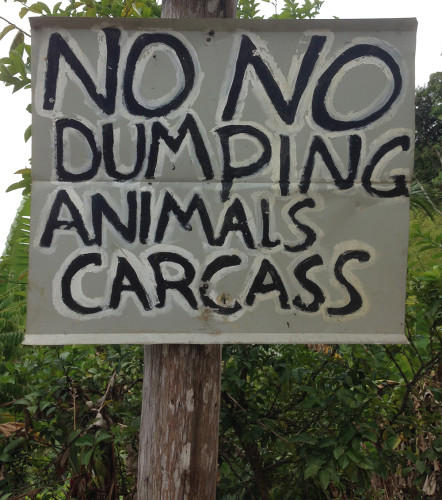
Trinidad is a former British colony and thus, English is the official language and nearly everyone in the tourism industry speaks it flawlessly. Go off the beaten path or listen when your hosts speak to one another, however, and it’ll become clear that what you hear is a slowed down and tidied up version of their own English-based Creole. In a linguistic system one part efficient and two parts indifferent, Creole strips its predecessor of many elements our ears have grown to appreciate, like “s” sounds and the breathy pauses between words. Numerous times I found myself concentrating intently on peoples’ mouths in an uncomfortable space where I both recognized my own language yet had no grasp on what was being communicated. And squinting harder didn’t help. Any glimmer of recognizable English was quickly dashed by a perplexing juggernaut of consonants and vowels. Even the phrases I understood were used in unfamiliar contexts: “Good Night” is an evening greeting in Trinidad, not the intimate farewell one says just before going to sleep. The pace of the language thankfully is formed by the tropical climate; phrases mellifluously follow one another off the tongue like a slowly poured rum punch. It was fun to drink in.
Rental Car Switcharoo
I booked a car on Travelocity through “Fox Rental Car” for our arrival in Trinidad. When we landed – at around 9pm after a full day of travel – we couldn’t find the Fox Rental Car kiosk. Avis, Alamo, Budget, and Thrifty were all present; Fox was nowhere to be seen. Even the tourist information center was closed. Thankfully, the gentleman at the cab stand agreed to use his personal phone to call the number on our email reservation. An enthusiastic voice on the other line said that he’d be there within 20 minutes. Nearly an hour later, a young man clad in blue jeans, a black shirt and flip-flops showed up with a laptop case and clipboard—none of it branded “Fox.” I passed a glance at the paperwork and noticed a different name entirely: “Xtra Car Lease.” The logo looked to be a product of Microsoft Clipart to my incredulous eyes. After some cautious prodding—but before he ran my credit card on his portable reader—we learned that Fox contracts with his company to provide cars in countries where they don’t have offices. Most Americans would be unsettled by this lack of transparency, but my need for a pillow overruled my skepticism. We swiped my credit card, checked for damage, shook hands and took off for the mountains in our dramatically underpowered Nissan.
Zip-tied Hubcaps
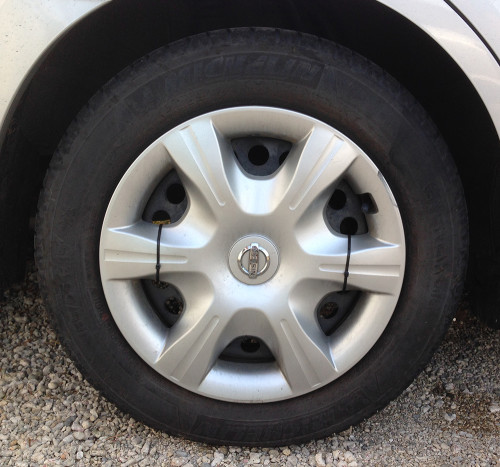
Let me be perfectly clear: there aren’t many problems in life that can’t be solved with duct tape, zip-ties, SuperGlue or a combination of all three. I had just never seen Zip-Ties used so blatantly on a car. Personally, I appreciate the ingenuity of using plastic fasteners to keep the hub caps attached to the vehicle. Americans, who aren’t used to driving on the other side of the road, may be unwittingly prone to clip curbs, thus liberating the car of any disk-shaped pieces of plastic located at the point of contact (ask my dad about Australia in 1998). It does, however, raise concerns about how issues with other, perhaps more important, parts of the car were fixed. For me, it was a nice accent piece. And damned if we didn’t return the car with all four hubcaps still attached.
“When will we know if the 4:25 flight is delayed?”
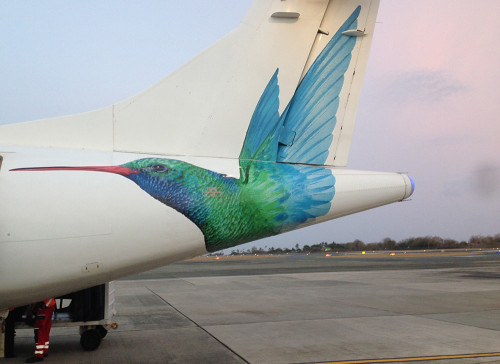
After spending two beautiful days exploring Tobago, Trinidad’s accompanying island to the north, we arrived back at the capital city, Scarlborough, for our return flight. The airport is small but there are flights between the two islands every thirty minutes. We were informed upon our arrival that our flight, which left in about an hour and a half, would likely be delayed. Apparently a mechanical issue earlier in the day had had a cascading effect on all scheduled flights. But the Caribbean Airlines employee suggested that we stay nearby because they may be back on track by the time our flight was scheduled.
One look to the flight status board stated that the 4:25 flight was on time, so we went across the street to seek much-needed air-conditioning in the airport café. Flight updates were projected over the café’s loudspeaker, but if there’s anything that can make English-based creole less intelligible to American ears, it’s amplifying it through a speaker beaten down by time, salty air and humidity.
At about 3:50, less than thirty minutes before our flight was to take off, I left the cool confines of the café to check the flight status: “ON TIME.”
To verify, I waited in the growing queue to speak to a representative.
“Excuse me, is the 4:25pm flight still delayed?”
“We don’t know yet.”
“OK, when will you know?”
“4:26.”
I scanned her face, waiting for a hint of humor. No, she was serious: the flight won’t officially be delayed until after it was scheduled to take off. I thanked Captain Obvious and walked back to the café.
In the end, our twenty-minute flight was delayed over two hours. We were late again to pick up our rental car from Xtra Car Lease.
Dangling Power Lines
Even if these were well insulated as to not cause any harm from electrocution, there are very few instances where one has to navigate around powerlines during a normal day. If you do, you have bigger issues to worry about.
Road Conditions, No Bull
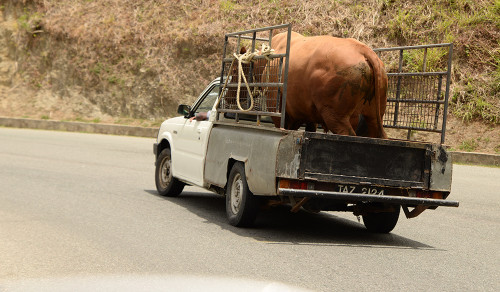
There are some beautiful windy mountain roads on both Trinidad and Tobago: lush foliage, isolated streams and impressive vistas. Due to the conditions of the road, however, the passenger was the only one who could enjoy them. Massive potholes, large piles of gravel, stopped cars, and veering oncoming traffic—all in a country with the lowest “warning sign to blind corner” ratio I’ve ever encountered—meant that the driver couldn’t ever take their eyes off the road. And sometimes the eyes of both the driver and passenger are affixed on the road, specifically on the massive bull in the compact pick-up truck ahead of them.
The “No Wave”
Most who know me know that I am fairly even-tempered. But one thing that gets me really fired up is when drivers do not wave when you obviously took precious time out of your day to let them pass. Clearly, the ten seconds it takes me to back up my car is worth the 0.000015 calories required for you to lift your finger off the steering wheel to show your appreciation. Interestingly, Trinidadians do not wave to one another while driving, or at least not to us. Perhaps it’s a national referendum to save energy considering the number of blind corners and narrow passages exist in this country; drivers’ hands would spend too much time away from the wheel.
“Chicken Lane”
Just outside of Trinidad’s capital, Port of Spain, we encountered a five-lane road where the center lane was dedicated to whomever was using it. It didn’t matter which direction you were going: if you were there, it was yours. It wasn’t a turn lane. People were driving down at the same speed of traffic, and the direction of cars on this lane changed from block to block.
Customer Service
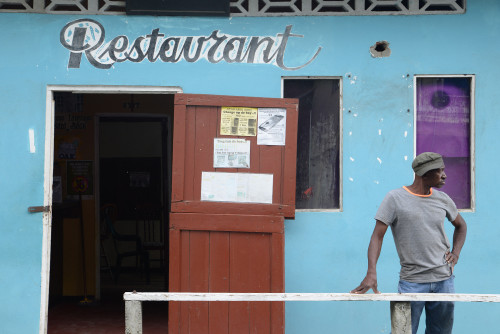
It could be us, but we never really encountered any “service with a smile” while in Trinidad and Tobago. We certainly don’t have high expectations and while I’m “lactose unpleasant” and Toby has a wheat allergy, we are generally low maintenance and affable. We certainly never found any bubbly personalities in the service sector. Transactions were helpful but very, um… transactional. While it was approaching closing time, Toby’s request for a piña colada at a restaurant was met with an overt eye-roll from our waitress as she walked away, to the extent where we didn’t actually know if she’d return with the drink (she did, it was delicious). She wasn’t exactly overjoyed with my request for a double rum, neat; a drink, need I remind you, that is the simplest to prepare (tilt bottle over glass) and offers the highest profit margin of anything in the restaurant. It was a challenge for us to break our waiters and waitresses with our charm and wit, and it was one we accepted with aplomb. As for our piña colada waitress, we had to wait until the following day to break her. She was way on the other side of the street but we would’ve see that precious smile a mile away.
But as long as the interaction – no matter how warm or cold – results with a rum drink in my hand, I won’t complain.
Trading Juncos for Jacobins: Birdathon Goes South in 2015
“Oh, you’re trying to find as many species as possible today?”
I was a bit stupefied when these words came out of the mouth of our Trinidadian guide. It was early afternoon, a full eight hours into our Birdathon, and it appeared that the foundational strategy for the 24-hour challenge hadn’t yet sunk in.
Toby Ross, close friend, nature lover and Seattle Audubon employee, and I were just beginning our week-long vacation in Trinidad and Tobago at the renowned Asa Wright Lodge, perched on top a verdant mountain valley on the tropical island of Trinidad. Birdwatchers travel here from around the world to see colorful species from North America and the Caribbean mix with denizens from South America, located just ten miles off the countries southern coast.
As a habitat, the tropical rainforest is infamous for straining the necks of birdwatchers who seek fleeting glimpses of parrots, toucans and cotingas high in the dense canopy above. At Asa Wright, you can sit comfortably—coffee in hand—from the lodge’s well-situated veranda and effortlessly spot birds on treetops down valley, all while dozens of species of colorful hummingbirds and tanagers visit feeders almost directly in front of your face.
As Toby and I planned a full-day effort in an environment replete with unfamiliar species and sounds, we knew that local knowledge was necessary to find as many species as possible. But when birding is so easy, and in a region already renowned for a unhurried approach to life, it was hard to instill the urgency required for a “Big Day.” Our requests for private guides at the front desk were met with counteroffers to sign up for established tours. Questions to the on-staff naturalists about which habitats would offer the longest species list were met with shrugs and slightly bewildered expressions.
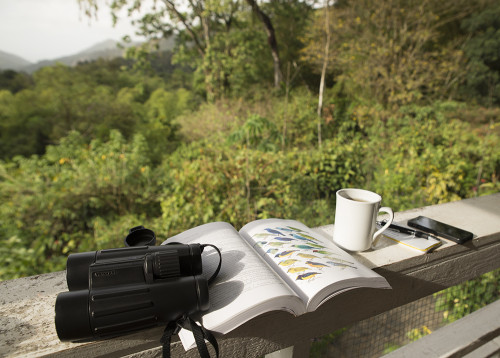
It was pretty clear that Birdathon this year was going to be different.
Truth be known, it wasn’t difficult to adopt an approach more agreeable to our Caribbean hosts. Compared to previous Birdathons, my normally long drives to prime birding areas were replaced with a short, sleepy shuffle to the famous verandah. And when I first raised my binoculars to my eyes, my usual “first birds” – Dark-eyed Junco, American Robin, House Finch – were replaced with Spectacled Thrush, Crested Oropendola and Orange-winged Parrot.
We were indeed a long way from home.
The excitement continued; another forty species – and a cup of coffee – followed those first three before we sat down to a quickly consumed breakfast. (In order of appearance).
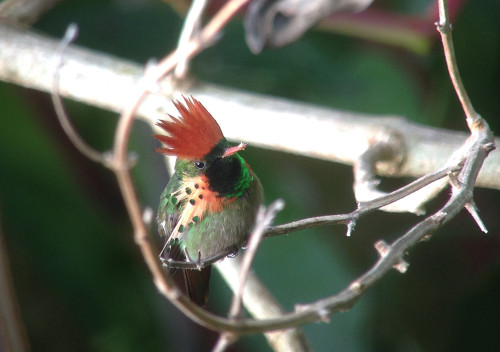
Tufted Coquette
Spectacled Thrush
Crested Oropendola
Orange-winged Parrot
Barred Antshrike
Silver-billed Tanager
Great Kiskadee
Palm Tanager
Cocoa Thrush
Wattled Bellbird
Banaquit
Green Honeycreeper
Violaceous Euphonia
White-banded Tanager
White-necked Jacobin
Gray-fronted Dove
White-chested Emerald
Tufted Coquette
Blue-throated Mango
Yellow Oriole
Golden-olive Woodpecker
Blue Dacnis
Ferruginous Pygmy-Owl
Bay-headed Tanager
Blue-chinned Sapphire
Scaled Pigeon
Long-billed Starthroat
Squirrel Cuckoo
Common Black Hawk
Black Vulture
Tropical Mockingbird
Coppery-rumped Hummingbird
Double-toothed Kite
Shiny Cowbird
Purple Honeycreeper
House Wren
Red-legged Honeycreeper
Rufous-breasted Hermit
Black-tailed Tityra
White Hawk
Piratic Flycatcher
Turkey Vulture
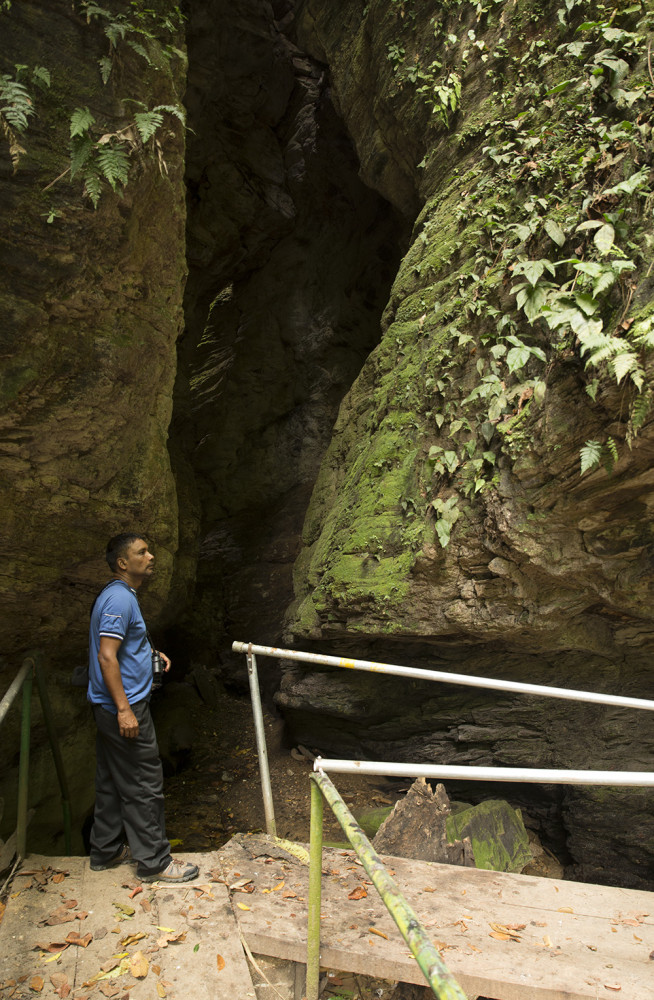
After stuffing fried eggs in our faces, it was time for our 8:30 tour to the famous protected caves which hold a breeding population of oilbirds. This species, which is in its own family, is the only nocturnal, fruit-eating bird in the world. Oilbirds have the face of an owl, the flutter-like flight of a swallow, but the wingspan of a harrier. They howl, growl and click to echolocate in the dark…and this is one of the best places in the world to see them. We were not going to see a lot of species on this field trip, but our target was obviously special.
Streaked Xenops
Oilbird
Golden-headed Manakin
Euler’s Flycatcher
White-chinned Thrush
Trinidad Motmot
Green Hermit
White-bearded Manakin
We were back at the lodge by 10:30 to meet Mahese (mah-HEESE), our private guide for the remainder of the day. We dutifully explained that we wanted to see as many species as possible. He expressed surprise when we confirmed this strategy several hours later. That being said, he was a wealth of local knowledge. I casually mentioned that it’d be fun to see a Pearl Kite, a small falcon a little larger than a robin. “Oh yeah?” he replied. Within minutes, we were on the side of the road with a scope trained on a thick tangle of branches a top a tree: the head of a Pearl Kite peered back from it’s nest.
We were at the entrance to the Arima Agricultural Station, a grassy area known for its birds and the hybrid water buffalo / brahma cows that are bred there. Highlights were a pair of a small flock of Green-rumped Parrotlets and a pair of roosting Tropical Screech-Owls.
Southern Rough-winged Swallow
Rock Dove
Pearl Kite
Tropical Kingbird
Carib Grackle
Ruddy Ground-Dove
Red-breasted Blackbird
Southern Lapwing
Grassland Yellow-Finch
Wattled Jacana
Savanna Hawk
Yellow-chinned Spinetail
White-headed Marsh-Tyrant
Pied Marsh-Tyrant
Gray-breasted Martin
Cattle Egret
White-winged Swallow
Green-rumped Parrotlet
Tropical Screech-Owl
Blue-gray Tanager
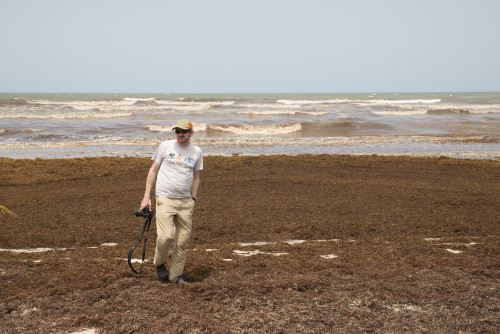
Back on the road again, we hit the east coast of the island around 1:00pm. We stopped for lunch at a beach smothered with sargassum seaweed. It was unprecedented on both Trinidad and Tobago and the talk of the whole island. Judging by the smell in the hot midday sun, I could see why Trinidadians were upset. Strategic stops in the mangrove forests nearby afforded us fleeting glimpses of two species of kingfisher; Mahese used a tape to bring in a stunning Black-crowned Antshrike.
Plumbeous Kite
Smooth-billed Ani
Pale-vented Pigeon
Yellow-headed Caracara
Magnificent Frigatebird
Black-crowned Antshrike
Blue-black Grassquit
Ringed Kingfisher
Green Kingfisher
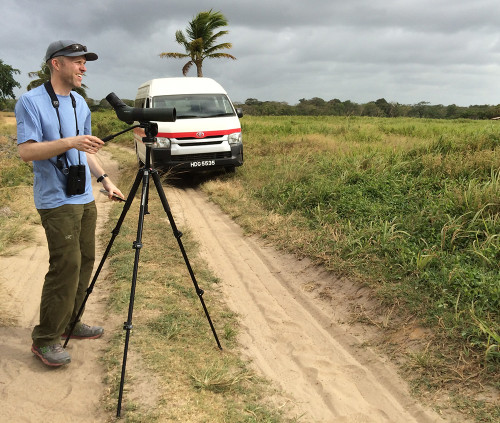
We drove slowly through the temporal wetlands at Nariva Swamp, which were now, unfortunately, dry. We waited at the far end of the swamp, near a stand of palm trees that usually host Red-bellied Macaws towards the end of the day. It was another decision that flies in the face of a normal “big day,” but this charismatic species was worth it. After about an hour of waiting (with rum punch in hand), a pair finally showed up and alit right on the exact palm tree that Mahese predicted.
Yellow-breasted Flycatcher
Rufous-browed Peppershrike
Striated Heron
Great Egret
Gray Kingbird
Yellow-bellied Elaenia
Limpkin
Crested Caracara
Green-throated Mango
Osprey
Yellow-hooded Blackbird
Purple Gallinule
Striped Cuckoo
Giant Cowbird
Long-winged Harrier
Short-tailed Swift
Fork-tailed Palm-Swift
Red-bellied Macaw
It was just an hour before nightfall and we were four species short of 100, our goal for the day. A large Linneated Woodpecker flew over the van as we held vigil for the macaws. As we drove out, Mahese pointed out White-tipped Dove and Yellow-crowned Parrot. Ninety-nine.
“I know where you can get one more,” Mahese confided wryly as we took a left out of the swamp. Within fifteen minutes we were on the side of the road in a small village, looking up at a tree: Yellow-rumped Cacique.
One hundred.
Birdwatching in Cuba
Cuba lies fewer than 100 miles off the Floridan coast and despite being just the size of Virginia – or half of Utah – the country holds twenty-seven species of birds that are found no where else on earth (which neither state can claim).
In October 2014, BirdNote initiated its international travel program with a trip to this captivating destination. We had a well-balanced itinerary that exposed our group to the arts, food, culture, natural spaces and people of this beautiful country. We did, however, visit Cuba on the least ideal month for birdwatching; neotropical migrants had already passed through and many of the resident specialties were not singing on territory (March is the best month, according to our guide). We still manage to tally 83 species on our six-day trip, even though the two days we set aside specifically for birdwatching coincided with the rainiest weather of the trip. Of these species, 22 are only found in the Caribbean, and 12 are only found in Cuba.
Here’s the list of species we found, by location.
Monday, October 20 2014
7:30am – 8:20am
Hotel Nacional de Cuba (23.144005,-82.3802733)
The grounds of this iconic hotel isn’t very expansive, or natural, but we found a decent assortment of birds, including several species of warbler and a tanager in the large pine tree.
Eurasian Collared-Dove (15)
Common Ground-Dove (5)
Mourning Dove (5)
Antillean Palm-Swift (2)
Red-legged Thrush (4)
Northern Mockingbird (4)
American Redstart (2)
Northern Parula (1)
Palm Warbler (4)
Yellow-throated Warbler (1)
Summer Tanager (1)
Cuban Blackbird (30)
House Sparrow (6)
10:50am – 11:30am
Finca Vigia (23.0677525,-82.2962719)
The grounds of Hemingway’s Home are incredibly lush. I wish we had more time there, and had arrived earlier in the day.
Turkey Vulture (7)
Cuban Emerald (2)
American Kestrel (1)
Red-legged Thrush (8)
Northern Mockingbird (6)
Northern Parula (1)
Cuban Blackbird (10)
Tuesday, October 21 2014
8:00am – 8:10am
Hotel Nacional de Cuba (23.144005,-82.3802733)
I made a quick tour of the grounds before breakfast. It was a good decision: I found my only Tawny-shouldered Blackbird of the trip!
Eurasian Collared-Dove (3)
Mourning Dove (5)
Antillean Palm-Swift (1)
Cuban Emerald (1)
Palm Warbler (6)
Yellow-throated Warbler (1)
Tawny-shouldered Blackbird (2)
Cuban Blackbird (5)
House Sparrow (2)
10:00am – 12:30pm
Jardin Botanico Nacional (22.9923477,-82.3370147)
An immense botanical gardens with loads of birding opportunities. We walked around the visitor’s center and through the nearby greenhouses. We then took our bus to the Japanese garden where we strolled around the small lake and had lunch.
Osprey (1)
Red-tailed Hawk (1)
Common Gallinule (3)
Killdeer (1)
Spotted Sandpiper (1)
Common Ground-Dove (3)
Great Lizard-Cuckoo (2)
Antillean Palm-Swift (9)
Belted Kingfisher (1)
West Indian Woodpecker (2)
Cuban Green Woodpecker (1)
Cuban Pewee (2)
Loggerhead Kingbird (1)
Cuban Vireo (1)
Red-legged Thrush (1)
Northern Mockingbird (11)
Tennessee Warbler (8)
American Redstart (2)
Northern Parula (1)
Palm Warbler (25)
Cuban Blackbird (22)
Greater Antillean Grackle (14)
Wednesday, October 22 2014
10:35am – 12:05pm
Soroa Orchid Garden (22.7936969,-83.0086505)
A loop of the lush grounds, with rain. Hooded Warbler = rare find!
Turkey Vulture (24)
Great Lizard-Cuckoo (1)
Cuban Emerald (6)
Cuban Trogon (1)
West Indian Woodpecker (4)
Cuban Pewee (1)
Loggerhead Kingbird (3)
Red-legged Thrush (1)
Northern Mockingbird (4)
Cape May Warbler (1)
Black-throated Blue Warbler (1)
Palm Warbler (7)
Yellow-throated Warbler (1)
Western Spindalis (2)
Cuban Blackbird (6)
Greater Antillean Grackle (12)
3:00pm – 4:20pm
Hacienda Cortina (22.6337022,-83.4088308)
This is unfortunately when the skies decided to dampen our optics. Thankfully the downpour we experienced right before lunch let up a bit. We were with a local guide who took us to the exact tree where endemic Giant Kingbirds breed. We were just a few months too early. Olive-capped Warblers in the pine trees were a nice consolation and a beautiful male Hooded Warbler was only the second our excited guide had ever seen at this destination.
Green Heron (4)
Turkey Vulture (14)
Common Ground-Dove (2)
Smooth-billed Ani (5)
Cuban Emerald (3)
Cuban Trogon (2)
West Indian Woodpecker (3)
Cuban Green Woodpecker (1)
American Kestrel (1)
Loggerhead Kingbird (1)
Red-legged Thrush (1)
Northern Mockingbird (9)
Common Yellowthroat (1)
Hooded Warbler (1)
American Redstart (2)
Northern Parula (1)
Palm Warbler (4)
Olive-capped Warbler (1)
Red-legged Honeycreeper (1)
Western Spindalis (16)
Summer Tanager (1)
Cuban Blackbird (46)
Greater Antillean Grackle (14)
Thursday October 23 2014
9:40am – 12:15pm
East Vinales Valley (22.624714,-83.6882365)
We went on a lightly-traveled dirt road out to the steep limestone cliffs that hold the endemic Cuban Solitaire, a plain bird with an incredible song. The unrelenting rain insured that the walk out was more of a muddy slog. I started to hear the solitaire’s song about 100 meters from the end of the trail, but I didn’t know if it was coming from a cage in a nearby farmhouse. It was wild and it sang from the dense foliage at the base of the cliff for 45 minutes before I was informed that we had to go. I gave it three more minutes: At two minutes, it flew in and perched on an exposed branch long enough to get in the scope. Incredible.
Wood Duck (1)
Anhinga (2)
Cattle Egret (5)
Turkey Vulture (9)
Smooth-billed Ani (1)
Cuban Emerald (3)
Cuban Tody (1)
Cuban Green Woodpecker (2)
Loggerhead Kingbird (3)
Cuban Vireo (1)
Cuban Solitaire (1)
Northern Mockingbird (7)
Black-and-white Warbler (1)
American Redstart (5)
Palm Warbler (8)
Olive-capped Warbler (1)
Yellow-headed Warbler (4)
Yellow-faced Grassquit (4)
Cuban Blackbird (15)
Greater Antillean Grackle (20)
5:10pm – 6:35pm
Horizontes La Ermita Hotel (22.611507,-83.6990699)
I walked around with two tour participants and found some nice species around the hotel grounds and down the street. Highlights were numerous Olive-capped Warblers in the roadside pine trees.
Great Egret (1)
Cattle Egret (4)
Mourning Dove (3)
Antillean Palm-Swift (3)
Cuban Emerald (2)
Cuban Green Woodpecker (1)
Northern Flicker (1)
American Kestrel (2)
Cuban Pewee (1)
Cuban Vireo (1)
Red-legged Thrush (1)
Gray Catbird (2)
Northern Mockingbird (12)
Black-and-white Warbler (1)
Palm Warbler (5)
Olive-capped Warbler (8)
Prairie Warbler (1)
Red-legged Honeycreeper (5)
Cuban Blackbird (3)
Greater Antillean Grackle (15)
Friday, October 24 2014
11:30am – 3:45pm
Las Terrazas (22.8447446,-82.9435265)
We had a tour of Las Terrazas, a small community with a hospital and numerous schools. I looked for birds at every stop, but the restaurant was the most productive location, providing our first and only Cuban Bullfinches. I scoped a soaring accipiter at the coffee shop: I would’ve called it a Cooper’s Hawk back home, which is a Gundlach’s Hawk in Cuba. Another endemic!
Turkey Vulture (250)
Gundlach’s Hawk (1)
White-crowned Pigeon (1)
Smooth-billed Ani (1)
West Indian Woodpecker (3)
Cuban Green Woodpecker (2)
Northern Flicker (1)
Cuban Pewee (2)
La Sagra’s Flycatcher (1)
Loggerhead Kingbird (1)
Yellow-throated Vireo (3)
Red-legged Thrush (2)
Northern Mockingbird (3)
Northern Parula (1)
Magnolia Warbler (1)
Bay-breasted Warbler (2)
Palm Warbler (3)
Yellow-throated Warbler (1)
Red-legged Honeycreeper (5)
Yellow-faced Grassquit (16)
Cuban Bullfinch (6)
Western Spindalis (6)
Cuban Blackbird (31)
Greater Antillean Grackle (35)
4:25pm – 4:35pm
Presa Machucucutu (23.0398506,-82.4935913)
We stopped to have a quick bathroom break next to a large, roadside wetland. No lifers for anyone but a lot of new species for the trip.
Ring-necked Duck (3)
Ruddy Duck (3)
Pied-billed Grebe (12)
Great Blue Heron (2)
Great Egret (5)
Snowy Egret (5)
Green Heron (3)
Black-crowned Night-Heron (5)
Turkey Vulture (3)
Common Gallinule (4)
American Coot (40)
Belted Kingfisher (2)
Here’s a full list of the birds that were seen by one or all of the group, with location and date of the first sighting. All species in BLACK are only found in the Caribbean; UNDERLINED are only found in Cuba.
WOOD DUCK (East Vinales Valley – Oct. 23)
RING-NECKED DUCK (Presa Machucucutu – Oct. 24)
RUDDY DUCK (Presa Machucucutu – Oct. 24)
HELMETED GUINEAFOWL (Domestic) (Hotel Nacional de Cuba)
INDIAN PEAFOWL (Domestic) (Hotel Nacional de Cuba)
PIED-BILLED GREBE (Presa Machucucutu – Oct. 24)
AMERICAN FLAMINGO (Domestic) (Las Terrazas – Oct. 24)
DOUBLE-CRESTED CORMORANT (Cojimar – Oct. 20)
ANHINGA (East Vinales Valley – Oct. 23)
BROWN PELICAN (Havana – Oct. 25)
GREAT BLUE HERON (Presa Machucucutu – Oct. 24)
GREAT EGRET (seen along the highway a couple times)
SNOWY EGRET (Presa Machucucutu – Oct. 24)
REDDISH EGRET (Horizontes La Ermita Hotel – Oct. 23)
CATTLE EGRET (seen from the highway)
GREEN HERON (Hacienda Cortina – Oct. 22)
BLACK-CROWNED NIGHT-HERON (Presa Machucucutu – Oct. 24)
TURKEY VULTURE (how could you miss these?)
OSPREY (Jardin Botanico Nacional – Oct. 21)
GUNDLACH’S HAWK (Las Terrazas – Oct. 24)
RED-TAILED HAWK (Jardin Botanico Nacional – Oct. 21)
COMMON GALLINULE (seen at two locations)
AMERICAN COOT (Presa Machucucutu – Oct. 24)
KILLDEER (Jardin Botanico Nacional – Oct. 21)
SPOTTED SANDPIPER (Jardin Botanico Nacional – Oct. 21)
LAUGHING GULL (Havana – Oct. 20)
ROYAL TERN (Cojimar – Oct. 20)
ROCK PIGEON (Most numerous in Havana)
SCALY-NAPED PIGEON (Vinales Valley Overlook – Oct. 23)
WHITE-CROWNED PIGEON (Las Terrazas – Oct. 24)
EURASIAN COLLARED-DOVE (widespread)
COMMON GROUND-DOVE (widespread)
MOURNING DOVE (widespread)
GREAT LIZARD-CUCKOO (Jardin Botanico Nacional – Oct. 21)
SMOOTH-BILLED ANI (Hacienda Cortina – Oct. 22)
BARN OWL (Havana – Oct. 20)
ANTILLEAN PALM-SWIFT (Hotel Nacional de Cuba – Oct. 20)
CUBAN EMERALD (Finca Vigia (Hemingway’s House) – Oct. 20)
CUBAN TROGON (Soroa Orchid Garden – Oct. 22)
CUBAN TODY (East Vinales Valley – Oct. 23)
BELTED KINGFISHER (Jardin Botanico Nacional – Oct. 21)
WEST INDIAN WOODPECKER (Jardin Botanico – Oct. 21)
CUBAN GREEN WOODPECKER (Jardin Botanico – Oct. 21)
NORTHERN FLICKER (Horizontes La Ermita Hotel – Oct. 23)
AMERICAN KESTREL (Finca Vigia (Hemingway’s House) – Oct. 20)
PEREGRINE FALCON (Hotel Nacional de Cuba – Oct. 24)
CUBAN PEWEE (Jardin Botanico Nacional – Oct. 21)
LA SAGRA’S FLYCATCHER (Las Terrazas – Oct. 24)
LOGGERHEAD KINGBIRD (Jardin Botanico Nacional – Oct. 21)
CUBAN VIREO (Jardin Botanico Nacional – Oct. 21)
YELLOW-THROATED VIREO (Las Terrazas – Oct. 24)
BLUE-GRAY GNATCATCHER (Jardin Botanico Nacional – Oct. 21)
CUBAN SOLITAIRE (East Vinales Valley – Oct. 23)
RED-LEGGED THRUSH (Hotel Nacional de Cuba – Oct. 20)
GRAY CATBIRD (Horizontes La Ermita Hotel – Oct. 23)
NORTHERN MOCKINGBIRD (Hotel Nacional de Cuba – Oct. 20)
OVENBIRD (Horizontes La Ermita Hotel – Oct. 23)
BLACK-AND-WHITE WARBLER (East Vinales Valley – Oct. 23)
TENNESSEE WARBLER (Jardin Botanico Nacional – Oct. 21)
COMMON YELLOWTHROAT (Hacienda Cortina – Oct. 22)
HOODED WARBLER (!) (Hacienda Cortina – Oct. 22)
AMERICAN REDSTART (Hotel Nacional de Cuba – Oct. 20)
CAPE MAY WARBLER (Soroa Orchid Garden – Oct. 22)
NORTHERN PARULA (Hotel Nacional de Cuba – Oct. 20)
MAGNOLIA WARBLER (Las Terrazas – Oct. 24)
BAY-BREASTED WARBLER (Las Terrazas – Oct. 24)
BLACKBURNIAN WARBLER (Hotel Nacional de Cuba – Oct. 26)
BLACK-THROATED BLUE WARBLER (Soroa Orchid G. – Oct. 22)
PALM WARBLER (the most frequently seen warbler)
OLIVE-CAPPED WARBLER (Hacienda Cortina – Oct. 22)
YELLOW-THROATED WARBLER (Hotel Nacional – Oct. 20)
PRAIRIE WARBLER (Horizontes La Ermita Hotel – Oct. 23)
YELLOW-HEADED WARBLER (East Vinales Valley – Oct. 23)
RED-LEGGED HONEYCREEPER (Hacienda Cortina – Oct. 22)
YELLOW-FACED GRASSQUIT (Horizontes La Ermita – Oct. 23)
CUBAN BULLFINCH (Las Terrazas – Oct. 24)
WESTERN SPINDALIS (Soroa Orchid Garden – Oct. 22)
SUMMER TANAGER (Hotel Nacional de Cuba – Oct. 20)
TAWNY-SHOULDERED BLACKBIRD (Hotel Nacional – Oct. 21)
EASTERN MEADOWLARK (Highway to Vinales Valley – Oct. 22)
CUBAN BLACKBIRD (Hotel Nacional de Cuba – Oct. 20)
GREATER ANTILLEAN GRACKLE (Jardin Botanico – Oct. 21)
HOUSE SPARROW (Hotel Nacional de Cuba – Oct. 20)
Sh-t that wouldn’t fly back home: Cuba Edition
I love to travel. Sure, I like trying new foods and immersing myself in cities already centuries old when my native Seattle was just unexplored frontier. But the main reason I keep reaching for my passport is to find experiences that stand in stark contrast with my normal day-to-day life back home, like puppets having sex on prime time TV or “edible” beetle larvae.
Sometimes you have to really look for these experiences (overly positive news anchors in Canada); other times they smack you in the face just as you step off the plane (India). Even though it lies only 90 miles from the US shoreline, I suspected that Cuba, as a country in many ways stuck in the middle of the 20th century, was replete with opportunities for me to be baffled, stunned and amazed.
I couldn’t wait.
During our six day tour of the country – primarily in Havana, with a couple days in Viñales – we encountered a nice list of “shit that just wouldn’t fly back home.” None of these observations are right nor wrong, just different. My tone, at times, can be a bit snarky, but most of it is directed at my own culture, and not that of my hosts.
“Slick’r than Snot” Tile Floors

Cuba is a tropical island, therefore it rains. About four feet annually, in fact. So it’s reasonable to assume that people will enter homes or establishments with less-than-dry shoes, where they will almost certainly encounter tile floors. I have nothing against tile: they are great for repelling water and mud—easy to clean, to boot. When wet, however, tile floors provide as much traction as a lunch tray on an icy hillside. This would never “slide” in the U.S., where our cultural clumsiness is matched only by our propensity to sue the crap out of each other. If there’s a spill in Aisle 5 of a grocery store, managers will quarantine aisles 1 through 10 using CDC Level 5 protocols.
Our Cuban-owned hotel in Viñales apparently even waxed the tiles on our outdoor patios, perhaps so when traction is lost, the enhanced momentum would carry the victim past the single step – and its sharp, neck-breaking edge – to land on the soft grass beyond. In the event of a fall, I maintained an optimized “blood-to-rum” ratio to soften the impact.
No “Yellow Line”
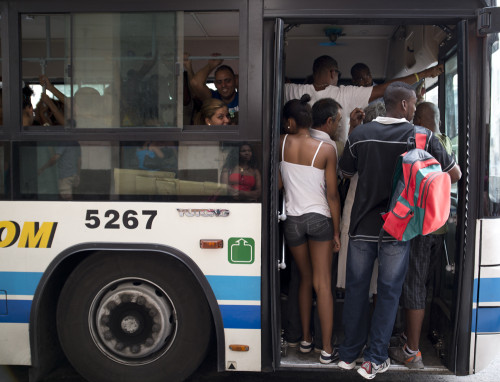
If you taken the bus in the US, you’ve been yelled at for not standing behind the yellow line. It’s a fact of life. In Cuba, that space could easily fit a dozen people. In downtown Havana, I watched with amazement as a man – in order to fit behind a closing door – contorted himself and his backpack into positions not yet discovered by Bikram Choudhury. The door attempted to close, then was obstructed by the mans arm. He shifted then it was obstructed by his backpack. Shifted again only to be foiled by his foot. His other arm. His foot again. It took thirty seconds for the creaking doors of the Russian-made bus to finally close, wedging the commuter against the person next to him with enough vigor to warrant a restraining order in the U.S. At least the bus offered the same temperature and humidity of a Bikram yoga studio, for a fraction of the cost.
Lack of Emission Standards
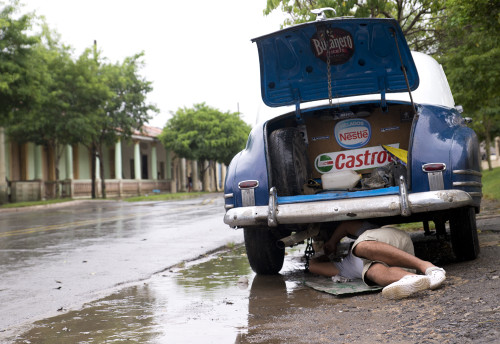
I’m a passionate environmentalist but I also love classic Detroit cars: vestiges of an era and culture not known for efficiency, even when properly maintained. Car owners in Cuba have been denied ready access to spare parts since the embargo, thus their cars are maintained with a fruitful mix of grit and ingenuity. The result is simply beautiful, and consumed most of my memory cards. Thankfully, they don’t have emission standards in Cuba, which would’ve removed these beautiful relics from the streets years ago.
The weekends and summer vacations of my childhood were spent in my parents 1982 Volkswagen Westfalia camper van, watching the roadside of the western United States whiz by my backseat window. Many of my dad’s weekends, however, were spent underneath the van, especially as the annual emissions test drew near. (And, most likely, a few weekends following the first, failed test). In Japan, if absolutely anything on your car is not performing optimally, it must be fixed or replaced before it is allowed on the street for another year.
Stand on a corner in downtown Havana and it’ll become quite clear, to your eyes and nose, that these restrictions have not penetrated Cuba’s borders. But one look at a Fairlane or Edsel and you simply won’t care.
Hitchhiking
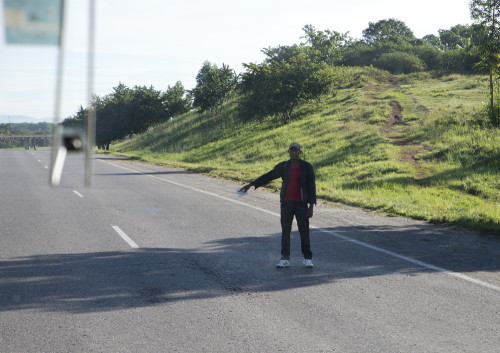
In the US, the legality of hitchhiking varies from state to state. It is, however, illegal to hitchhike on an interstate highway. While we drove down the impressively smooth Autopista Este-Oeste highway from Havana to Viñales, I was blown away by the number of people blatantly waiting for rides. Literally on the highway. Our bus driver would often have to swerve into the fast lane to avoid hitting people, who lurked in the shadows of overpasses to avoid the sun. It’s an efficient way to get places in a country that lacks transportation infrastructure and where owning a car is expensive. It just wouldn’t fly in the US, where you can’t even park on the shoulder without being pestered by highway patrol within minutes.
Gas Prices
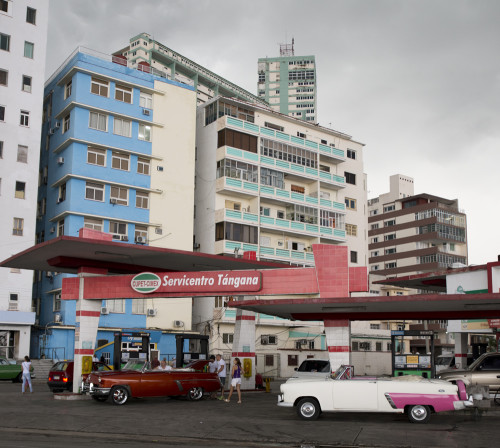
Venezuela is Cuba’s largest provider of oil, supplying 60% of the island’s demand (Cuba, in exchange, sent 30,000 doctors to Venezuela – source). Venezuela is also famous for having the cheapest gas in the world: $0.06/gallon (source). The fact that Venezuela supplies such cheap oil to Cuba almost guarantees that these Detroit relics would enjoy subsidized gas prices.
Nope. Gas is nearly $6/gallon in Cuba. If you even find a car available for sale in Cuba, and can afford the asking price (think supply/demand curve), you then have to be able afford to fill it up.
And, courtesy of restrictions put in place by both the Cuban and U.S. governments, this isn’t exactly an island of Priuses.
Glacial Internet
The internet in Cuba is tightly controlled to prevent the free exchange of ideas. But it isn’t just expensive, it’s based on infrastructure that’s decades old.
Terms like “dial-up” and “56k” don’t resonate with today’s youth. They can’t relate to the rhythmic, robotic sound of a computer dialing a god-damned phone number and, after waiting 15 seconds for a connection, which often failed, only to watch it struggle to pull down text emails so slowly that you’d watch, with great anticipation, visual bars that tracked its progress.
Remember that? That’s Internet access in Cuba. And even that isn’t readily accessible.
Journalists get 120 hours of free internet access a month. Many sell a portion of their access on the black market to help supplement their monthly salaries. I met a gentlemen who purchases 40-60 hours of internet access a month, for 3 CUC/hour* (about US$3.39). This monthly transaction was the equivalent to six months salary for the average government worker.
Thus, internet access is very much a luxury. And don’t forget it’s slow, like “frozen molasses” slow: loading Facebook takes 25 minutes on his computer and a one megabyte file – roughly half the size of a picture taken with an iPhone – takes two hours to download. In the U.S., where a frozen Facebook video is grounds to throw your $600 smartphone against a wall, this would simply not fly.
Internet is available to tourists in nicer hotels, and the situation will only improve. Just two months after our trip, President Obama announced the normalization of relations with Cuba. Within weeks, NetFlix and AirBnB announced their plans to enter the thawing market.
I used our six-day trip as an excuse to unplug; it was delightful.
Immigration Coffee Break
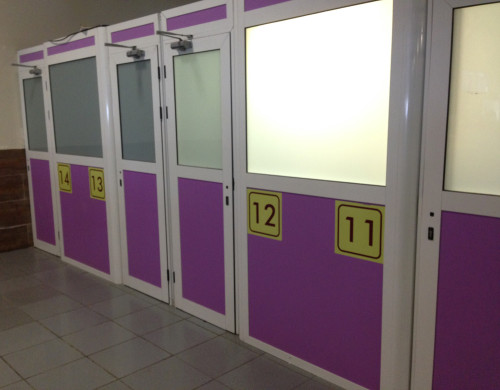
No one ever has a pleasant time going through immigrations and passport control. If you do, you have some sort of weird “I enjoy skeptical stares from strangers” fetish. I think my best experiences in immigration could be described as “frosty.” (This is especially the case returning to the U.S.). But, like removing one’s shoes in security, it just becomes a part of the adventure of travel.
I had an easy time entering Cuba. But, on our exit, our experience was a little different: the lines at passport control suddenly stopped moving. The doors closed. Officials moved briskly in front of the closed doors, purposefully avoiding eye contact with the twenty or so people still waiting in line. It took fifteen minutes for the lines to open again, as inexplicably as they’d closed. Apparently, the agents simply went on break.
If this had happened in the U.S. – where the stresses of travel reduce Americans into monsters with the self-entitlement of a toddler, the patience of a New York cabbie in rush hour, and the moral depravity of J. Dahlmer – these agents would’ve returned to a crime scene: a landscape strewn with torches, torn tropical shirts, and warring factions whose faces were smeared with the blood of their victims.
Homeless Dogs and Cats with Name-tags
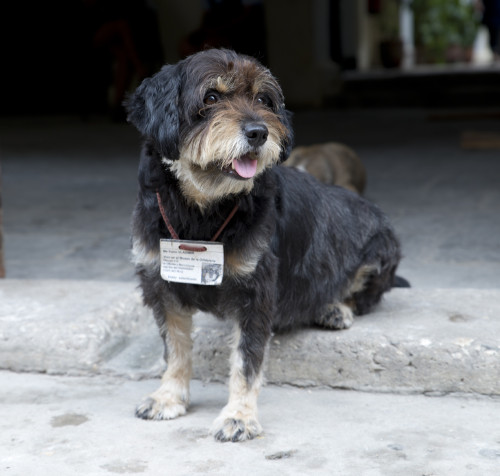
We ran across several dogs in old Havana donning name tags that advertises that they are owned and cared for, which apparently prevents them from getting swept up by animal control. We have this in the U.S., obviously, but you got to admit that it’s pretty damn cute. It almost looks like he has a handmade keycard lanyard and works at Amazon.
Beer Desert
I only saw two types of beer during our six day tour of the island, both of which were comparable to American macrobrew in look and taste (though, after a long day in the sun, any liquid under 98.6º is refreshing). If a restaurant in Seattle even attempted to open with only two beers on draught – and macrobrews at that – the establishment would be torched by an hirsute, flannel-clad cadre of lumbersexuals before the first pint was poured.
After my second mojito or Cuba Libre, however, I no longer cared.
Entering through the ass-end of the plane
I’ve flown a lot, but entering an airplane through stairs in the very back of the plane was new. (Envision a plane that crapped a staircase). It would’ve been unremarkable were it not for the fact that a line had formed … directly behind the idling engines. I wouldn’t describe either the 100+ decibel whine of a turbine engine or the accompanying exhaust as “delicate on the senses.” And I always enjoy boarding a flight already with a feeling of nausea deeply-seated in my gut.
“Convertible Cuban Pesos” (pronounced “kooks”) is one of two currencies in Cuba, created specifically for the tourism industry. The exchange rate is officially 1 CUC = US$1, but tourists endure a penalty and tax when exchanging, thus 0.87 CUC = US$1.
The Cars of Cuba
